Rad Power Bikes established themselves early as one of the leading players in affordable, consumer-direct ebikes. That momentum was likely blunted by high-profile recalls and lawsuits, however it seems like with the recent announcement of the Rad Power Safe Shield battery technology, Rad is once again gaining momentum.
I was specifically interested in the updated RadWagon 5 after spending some time on the RadWagon 4. The RadWagon 4 was a decent attempt, but as it turns out, the 5 is better in almost every way.
RadWagon 4 Got Off to a Shaky Start

My biggest concern about the preceding RadWagon 4 was the speed wobble the bike would develop if you loosened your grip on the handlebars. It was mostly placated by installing a Cane Creek Viscoset headset, but that wasn’t something the consumer should have to do after purchase to fix a major handling issue. These bikes are all one-size-fits-most, so it’s possible my experience was a result of my unique positioning on the bike. Regardless, it wasn’t good.
So, after receiving the RadWagon 5, I couldn’t wait to build it up and immediately take it for a test ride. I was very relieved to find a bike with perfectly composed handling. No more steering wobble – even with your hands completely off the bars.
There are many changes to the bike that could account for this improvement. The frame is completely new, there is no more multi-way adjustable stem, and the battery placement has changed. Perhaps most importantly, the tires and wheels have completely changed.
No More 22s!
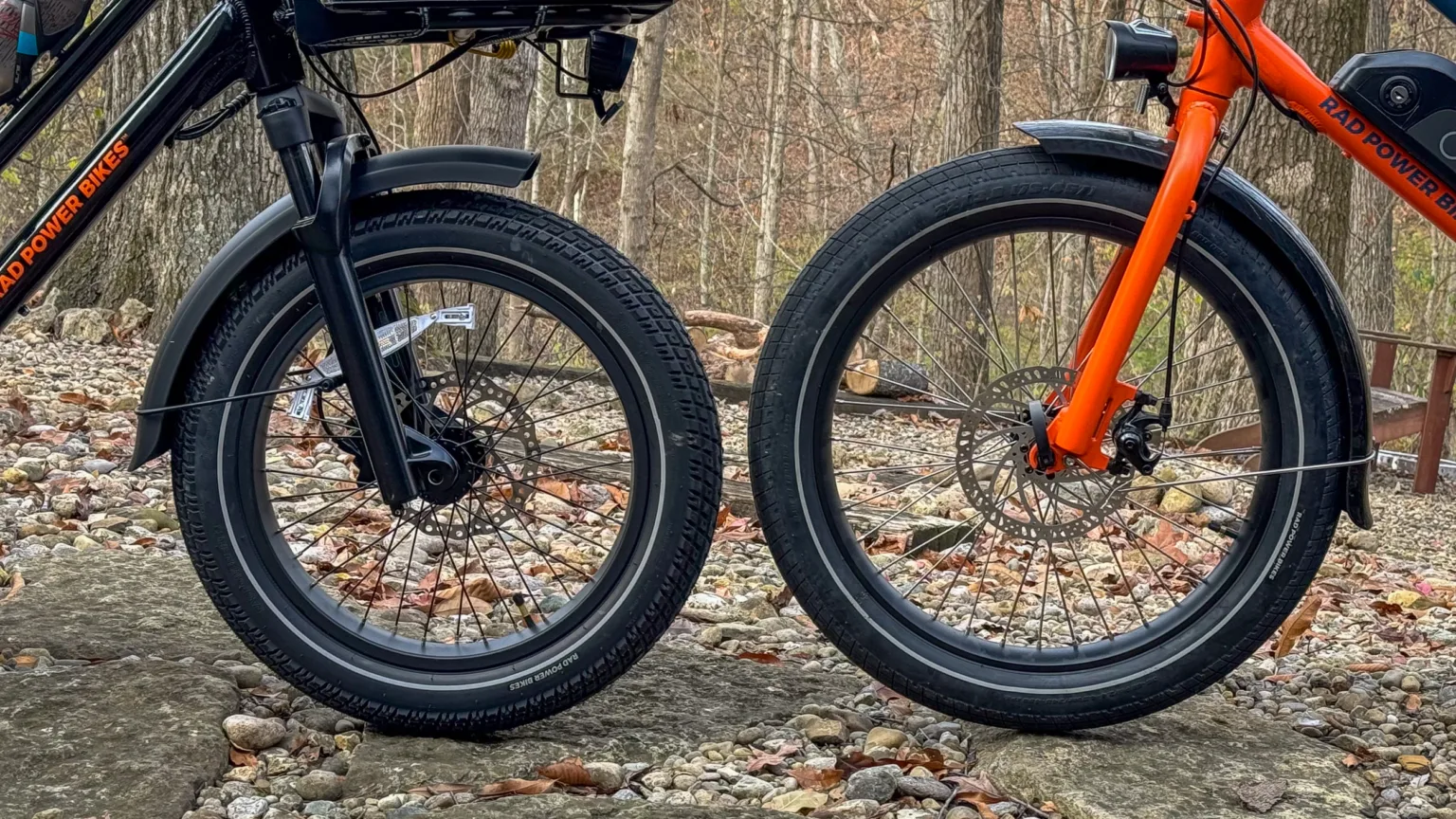
Why would tires and wheels make that big of a difference? The RadWagon 4 ran proprietary 22 x 3” tires and wheels with odd hub spacing (the QR fork dropouts measure 134mm), whereas the RadWagon 5 moves to non-proprietary 20 x 3.3” tires (made by Kenda) and more standard hub sizing for the new 45mm travel RST Guide suspension fork with a thru-axle. I had wondered if the original 22” tires were causing some, or all, of the speed wobble, but it was impossible to swap them out for anything short of a moped tire. That also meant getting replacement tubes or tires anywhere other than from Rad Power wasn’t an option – a big headache for any consumer who doesn’t have a spare.
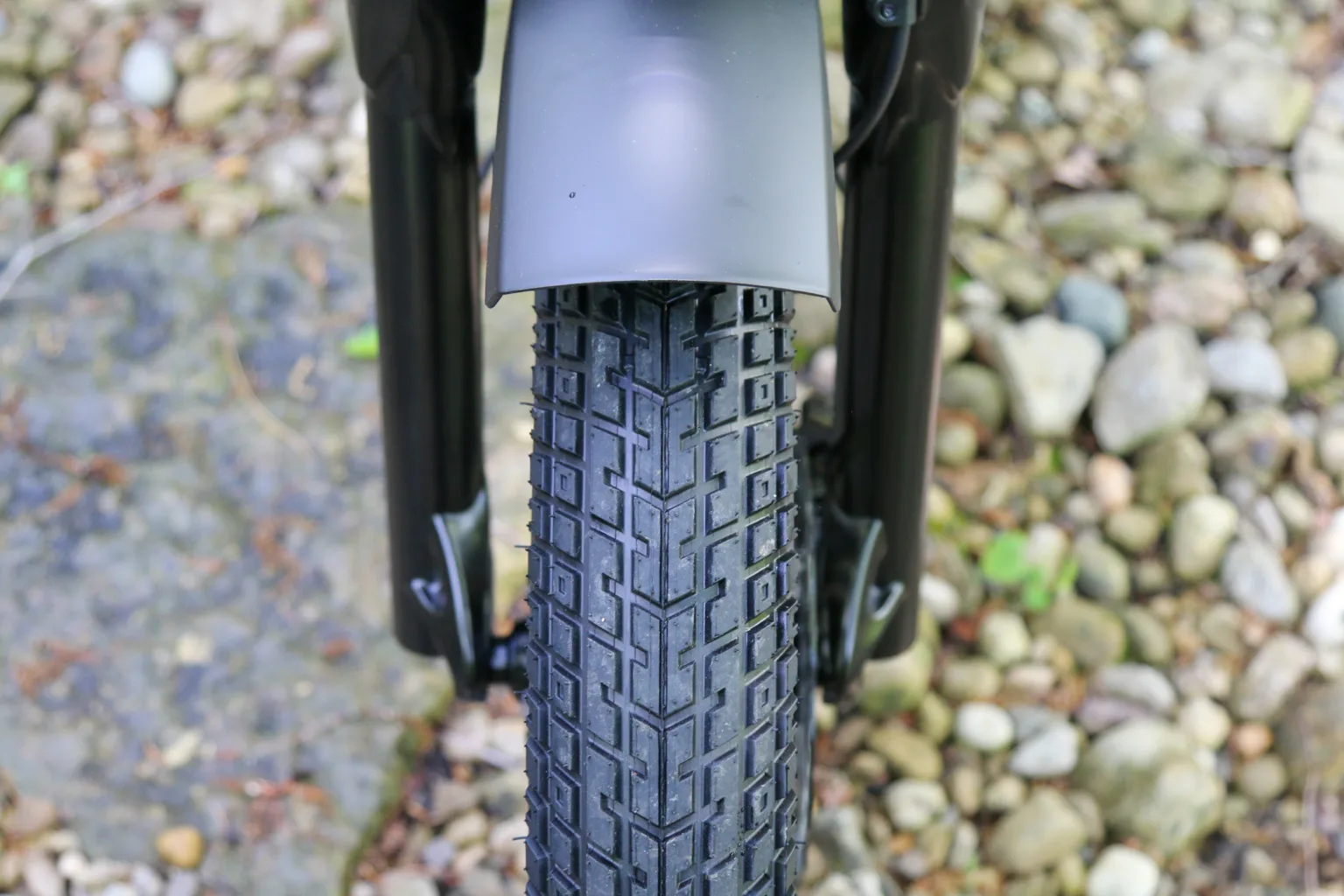

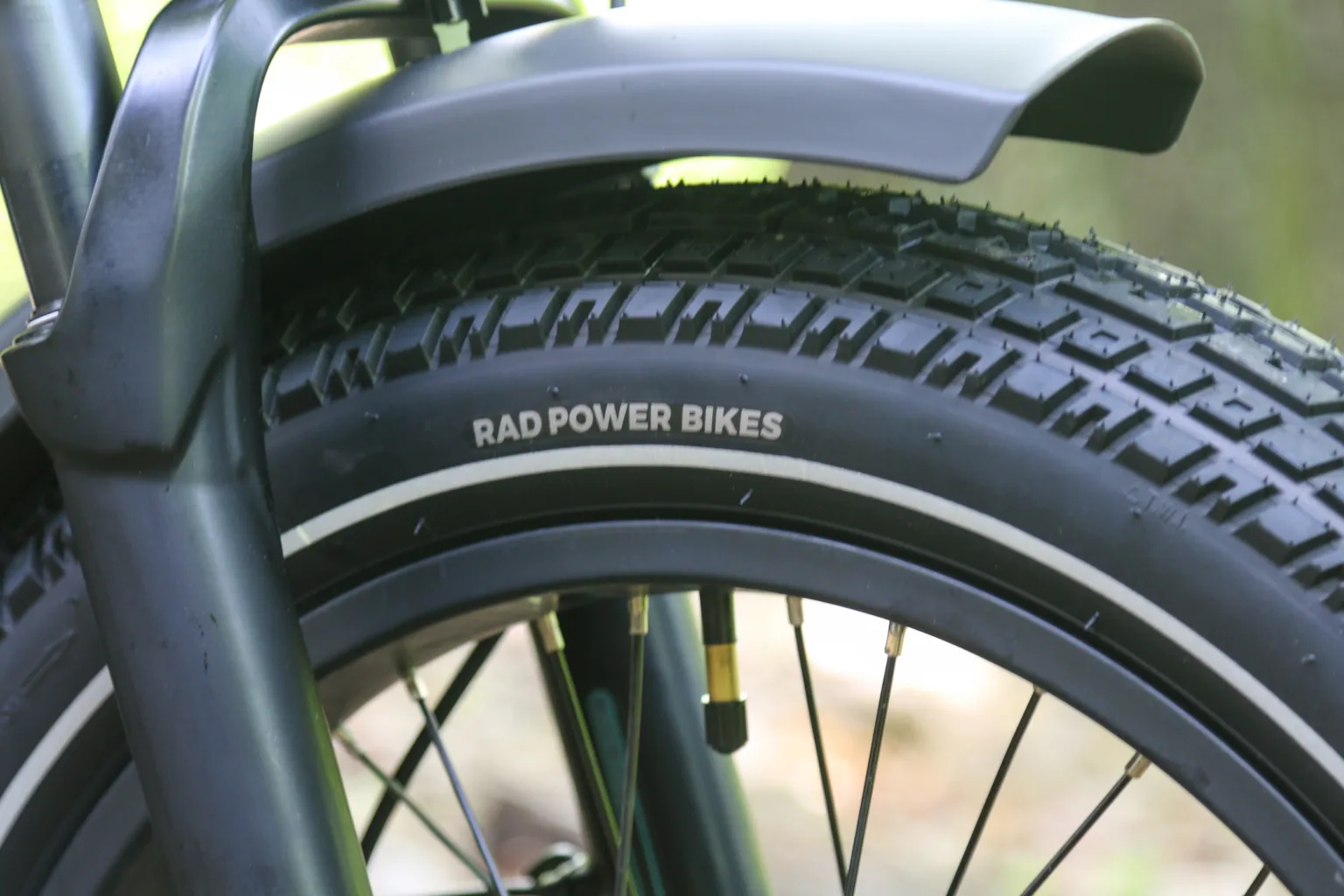
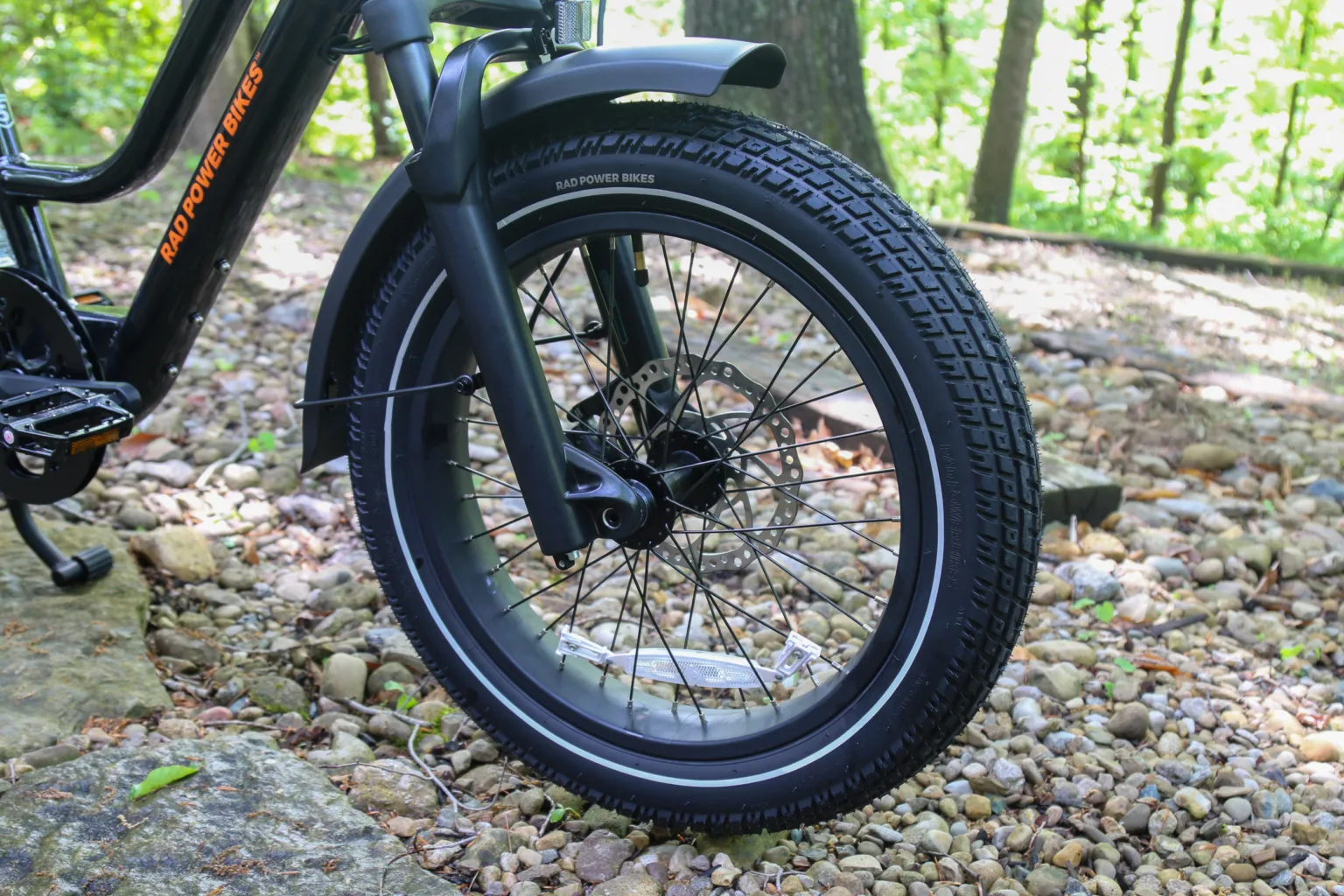
Despite the smaller wheels, the RadWagon 5 has a much better ride quality than the 4, even with the suspension fork locked out. The 20” tires ride smoother at higher pressures than the 22” tires, giving the whole bike a more confident and comfortable ride. With the 3.3” tires, I can run about 15-20psi comfortably without the ride feeling vague in the corners when fully loaded, and without feeling every bump through my spine.
Improved Frame Design
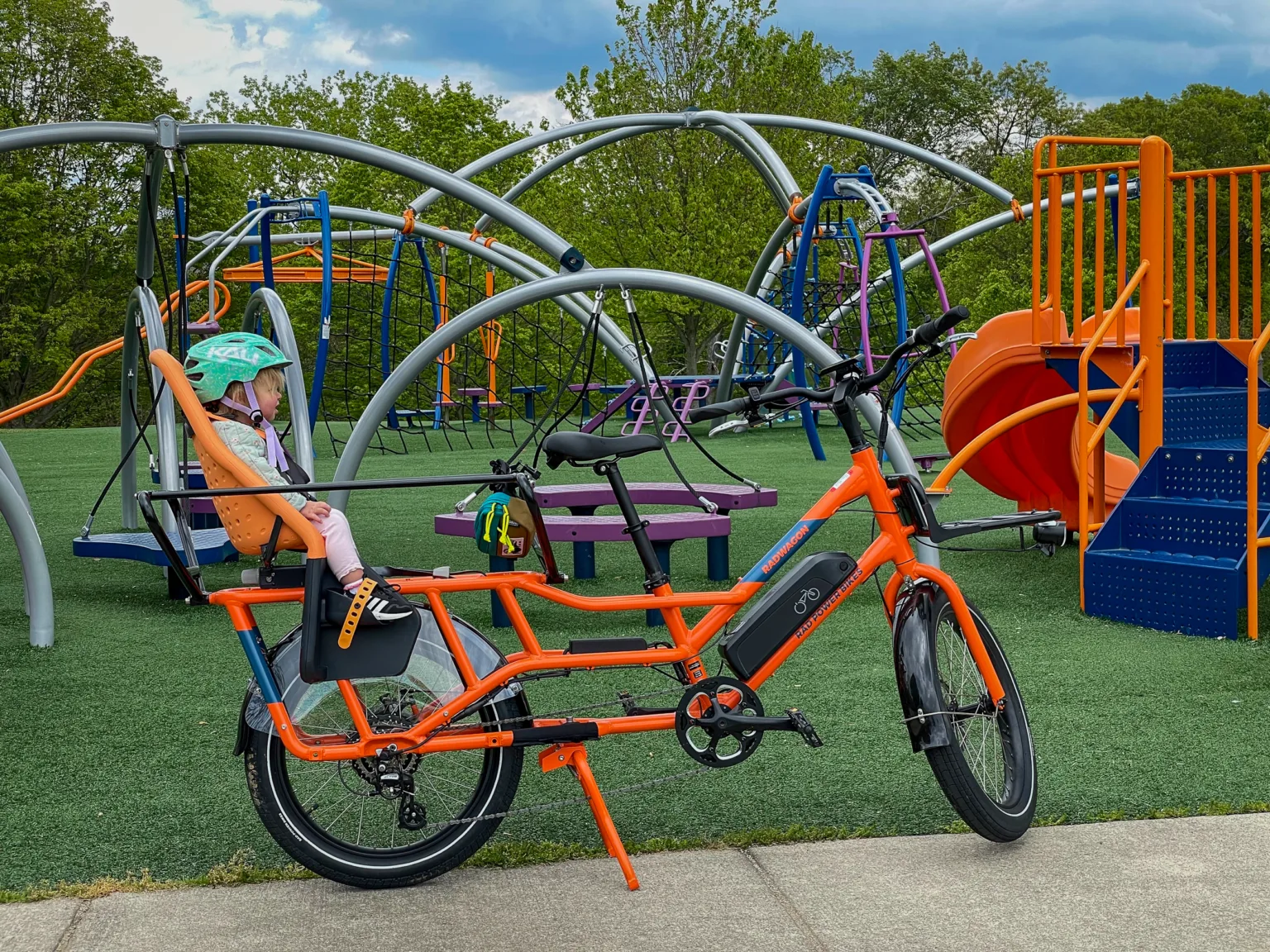
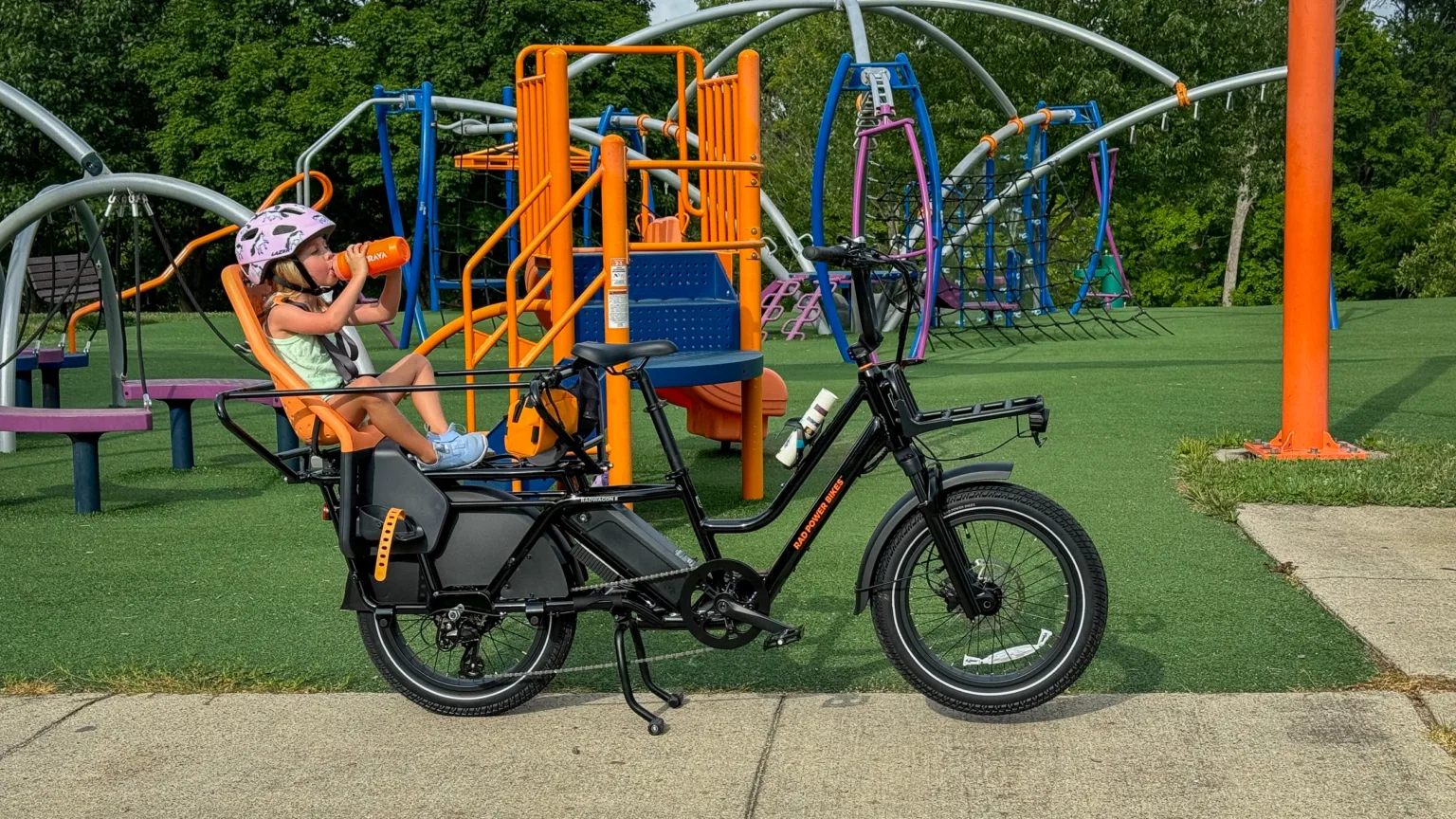
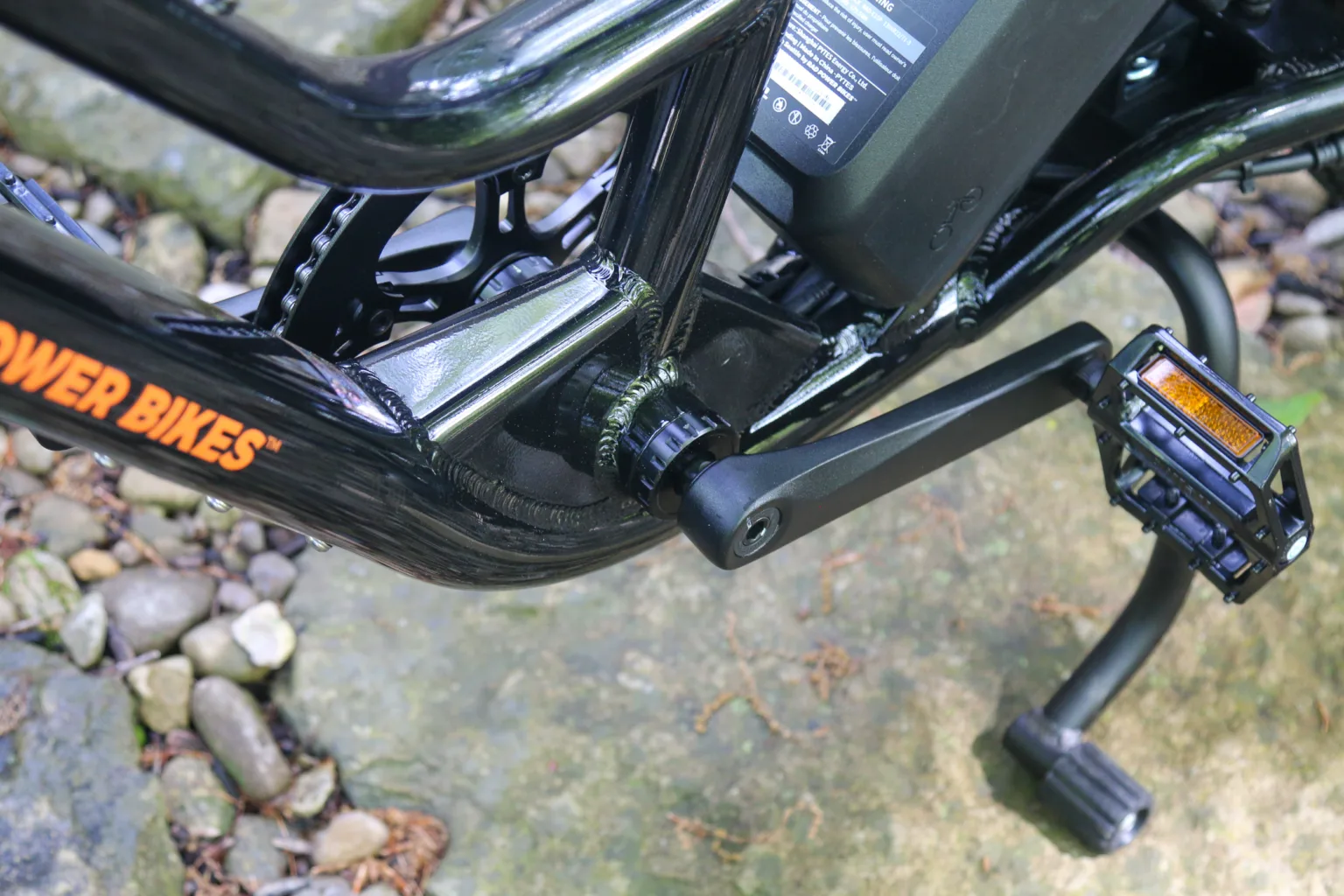
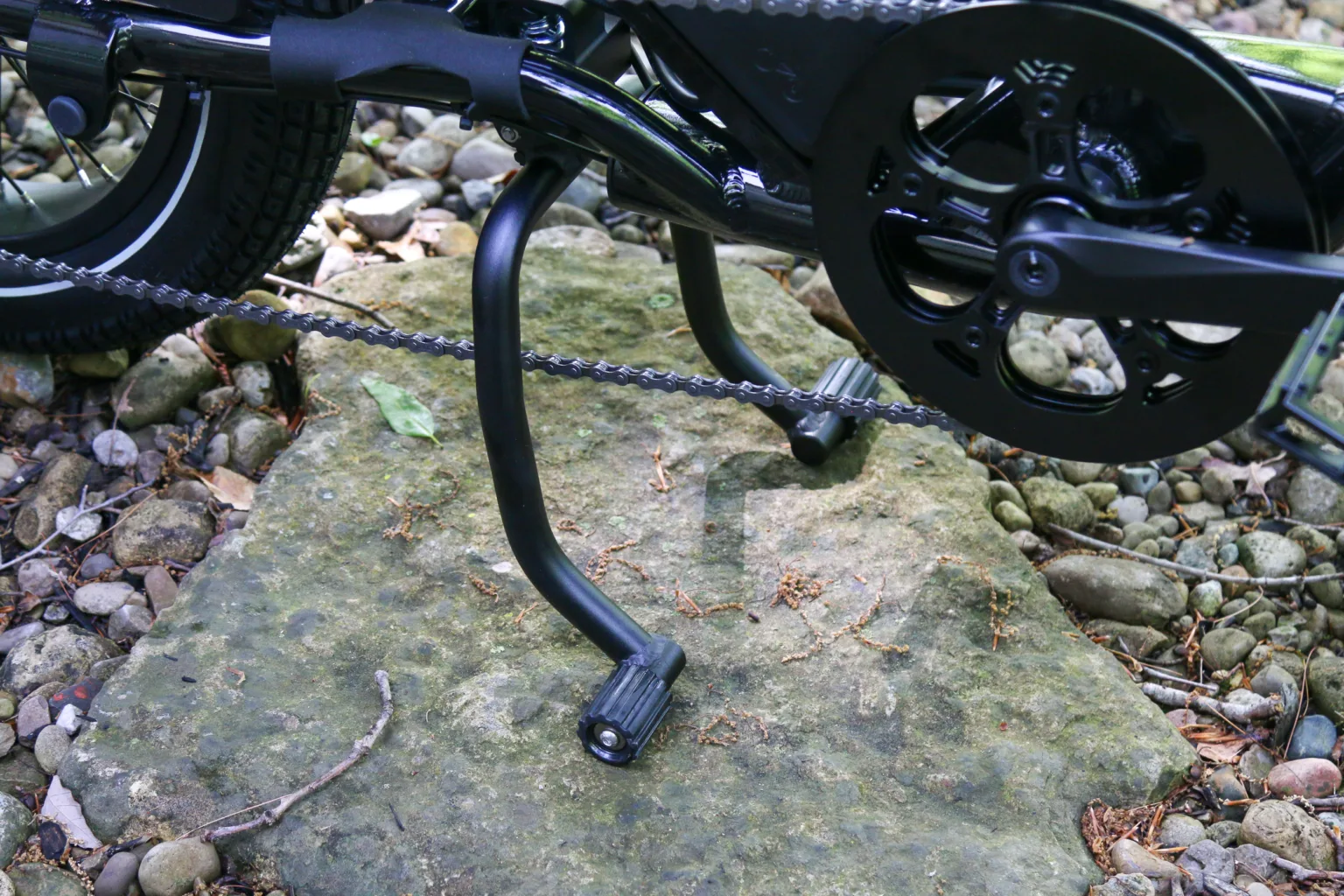
While both frames have the same 120lb carrying capacity for the integrated rear rack, the RadWagon 5 has a 375lb payload capacity (350lb on the RadWagon4 ), and feels much more stable when fully loaded. The weight of the battery is now behind the seat tube and lower in the frame which likely helps, and the frame has massive reinforcement around the bottom bracket junction to stiffen up the low-step frame design.
Stepping over the frame on the 4 could be a challenge if you had a water bottle mounted to the top tube. Now, even with a bottle, it’s much easier to mount and dismount the bike.
Rad Power states that the RadWagon 5 should fit riders from 4’11”-6’3″ (150-190 cm). I’m 5’8″, and found that I had to push the saddle all the way back on the rails to feel like I wasn’t super cramped from the short reach. But there is still more seat post to extend for taller riders.
Keep Your Accessories
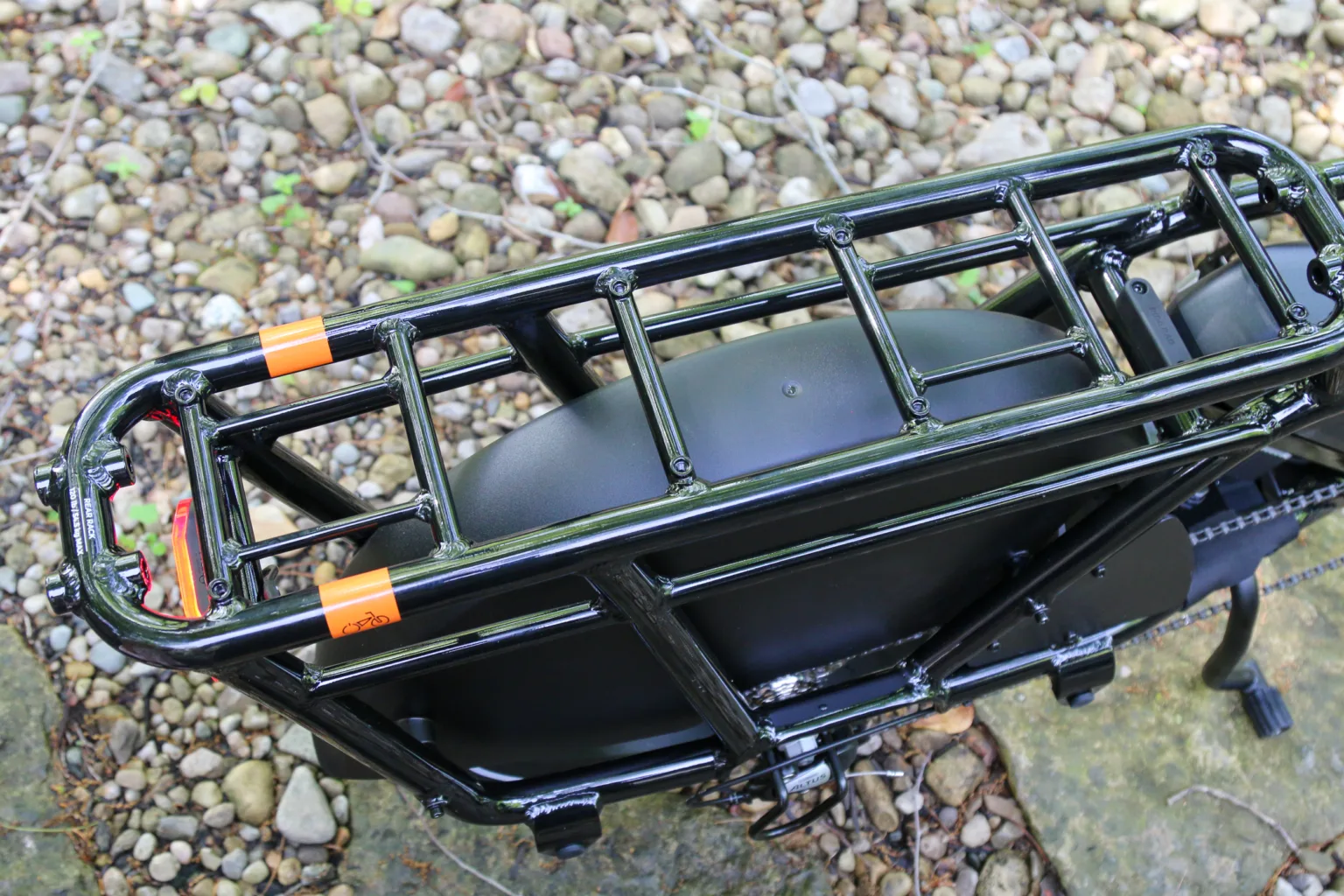
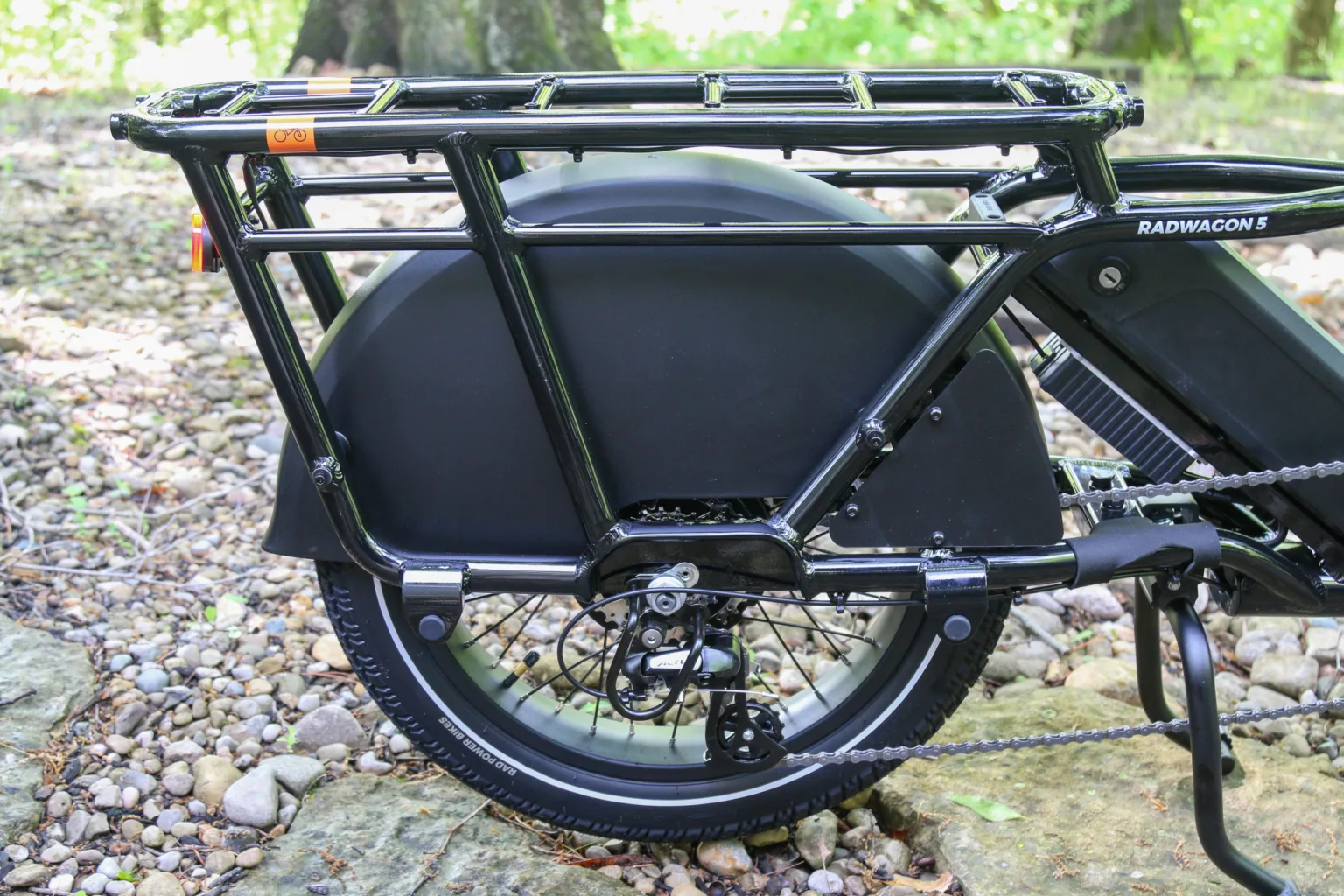

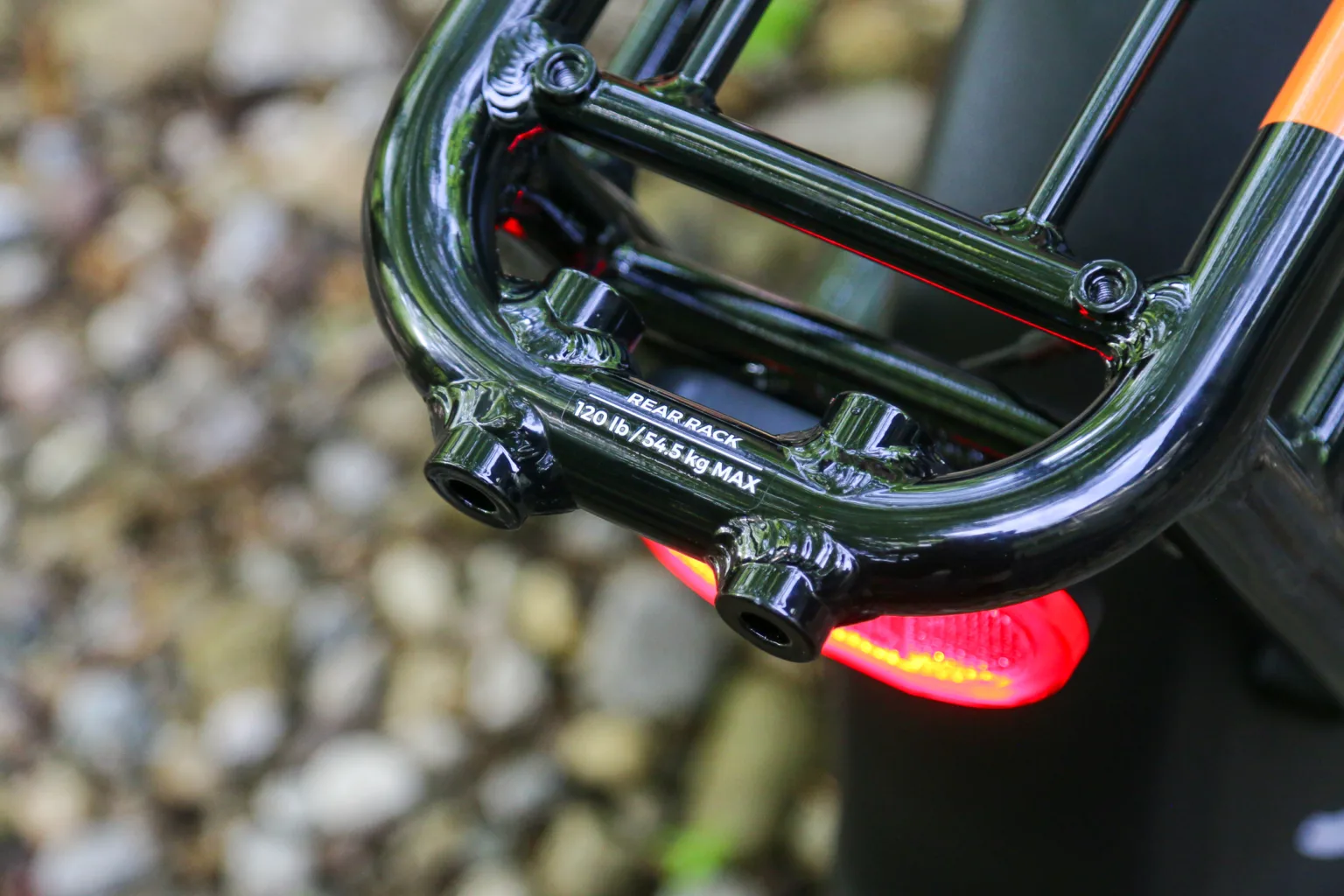
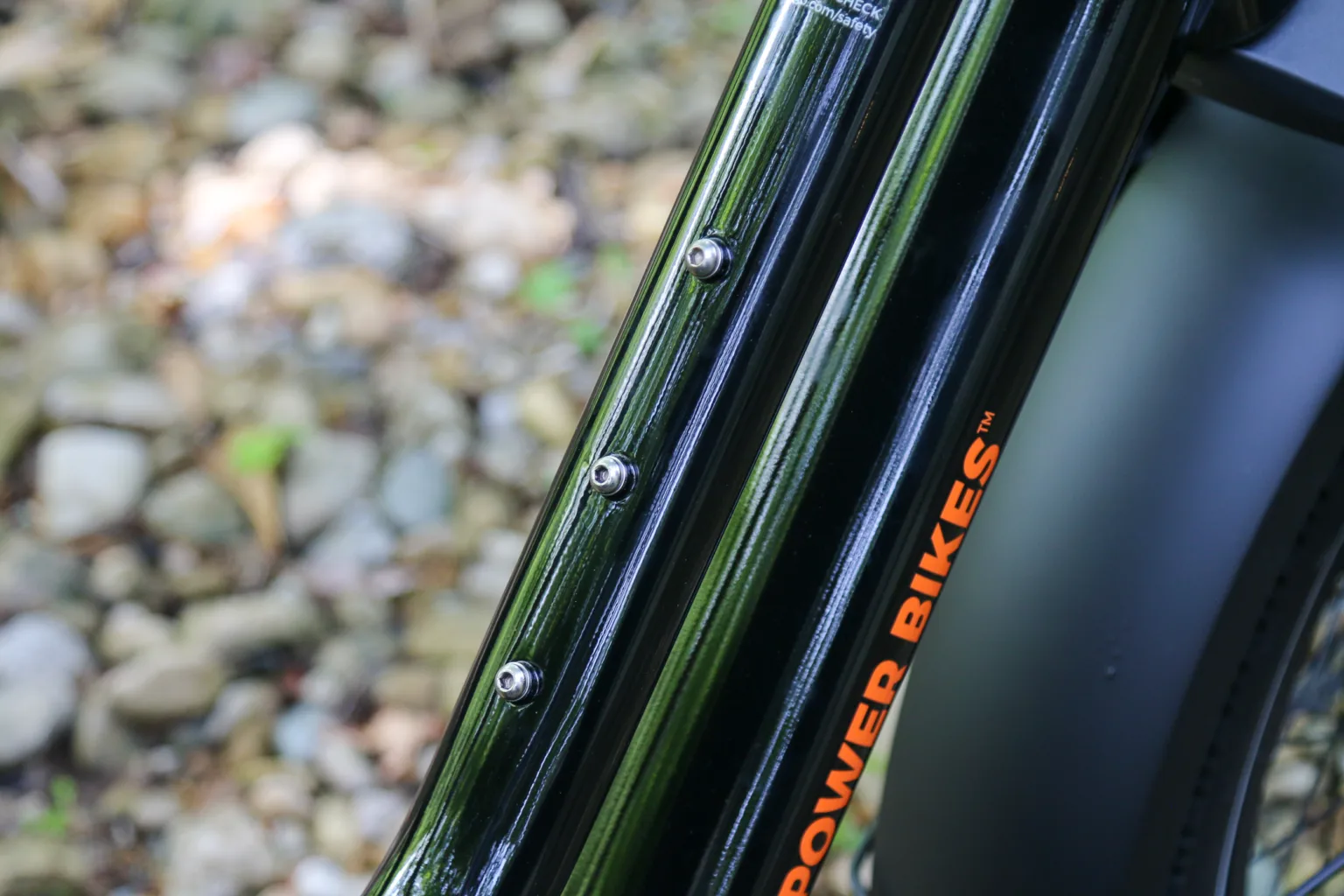
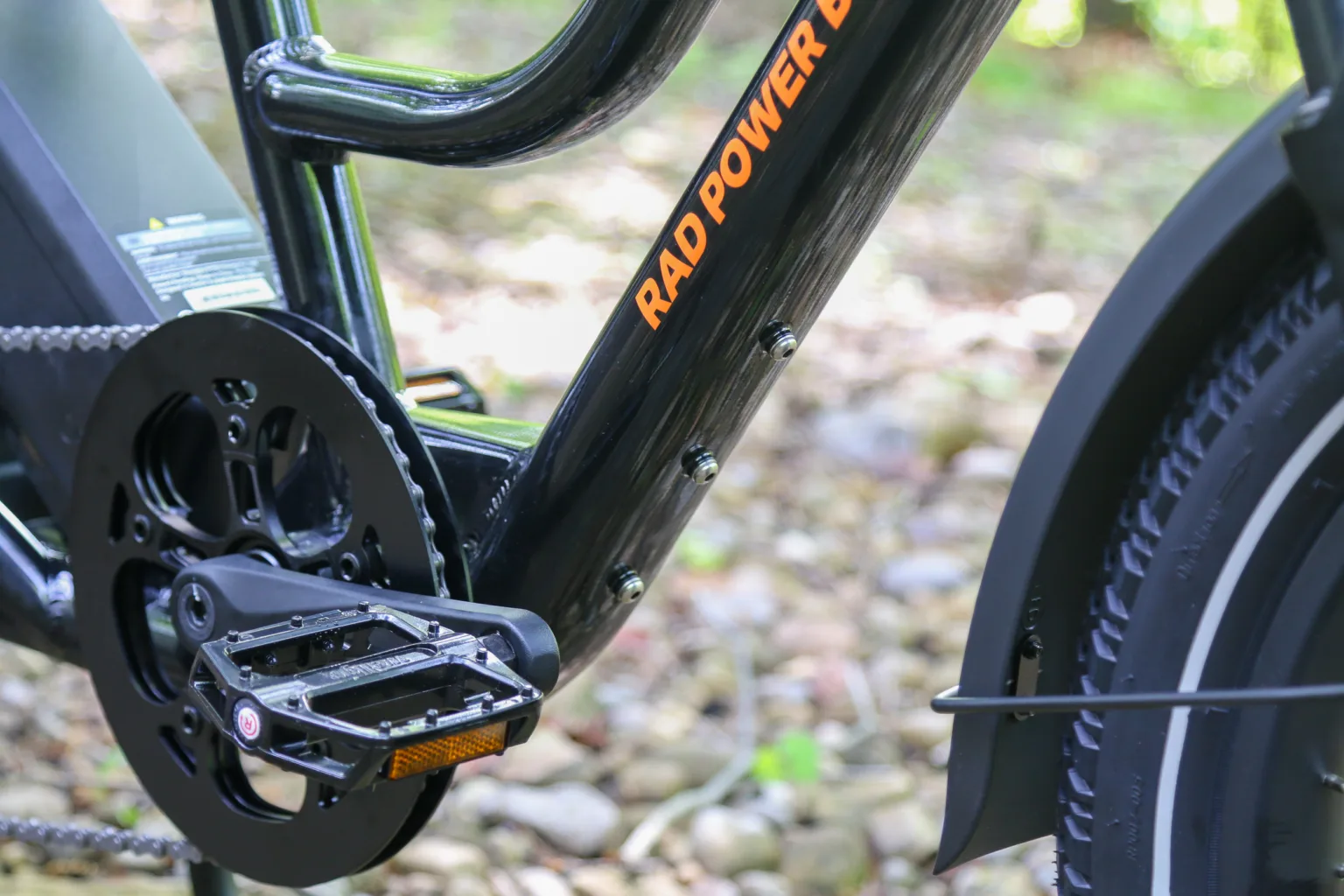
When it comes to accessories, I love that all of the accessory mounts on the 5 are the same as the 4. That means if you already own accessories like a front rack, basket, caboose, running boards, etc., they’ll all fit on your new bike.
Like the 4, I’ve spent the most time using the 5 to chauffeur my daughter around town. The RadWagon has two integrated mounts for child seats like the Yepp Maxi, and you can mount them inside of the RadWagon Caboose rails for a bit of added protection around the child seat. Once they graduate from the Yepp, you can add running boards and a seat cushion and keep the Caboose to still zip around with your kids (or friends, assuming the total weight is under 375lbs).
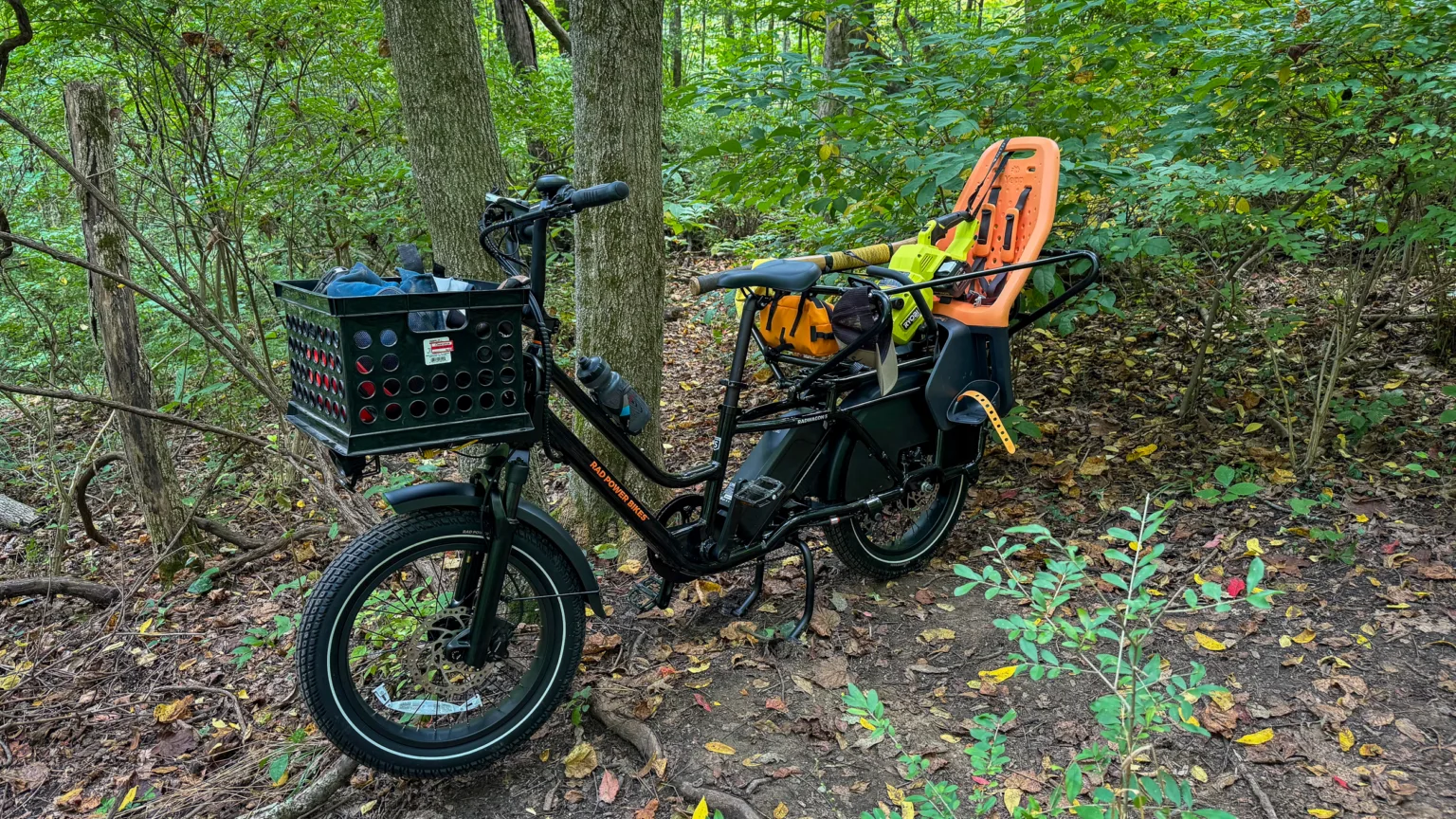
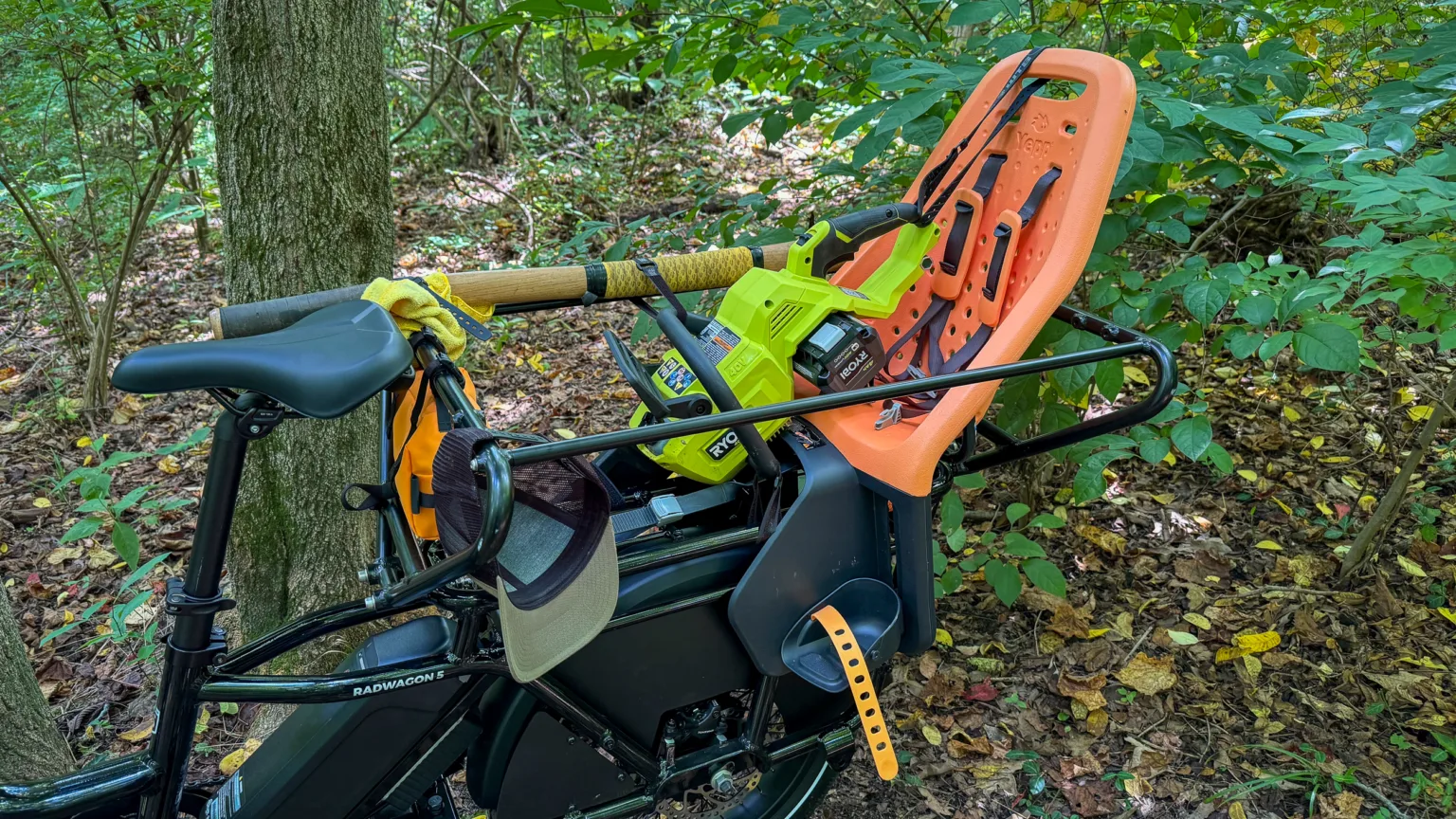
There are plenty of cargo-carrying options to make trips to the grocery, post office, etc. easier than ever. I went with a front rack that I strapped a milk crate to, but Rad Power offers their own front baskets that you can bolt right on.
Really, the only catch to the RadWagon rack system is that the oversized tubes make it so you can’t run most pannier bags that aren’t sold by Rad Power.
Simpler, More Upright Cockpit
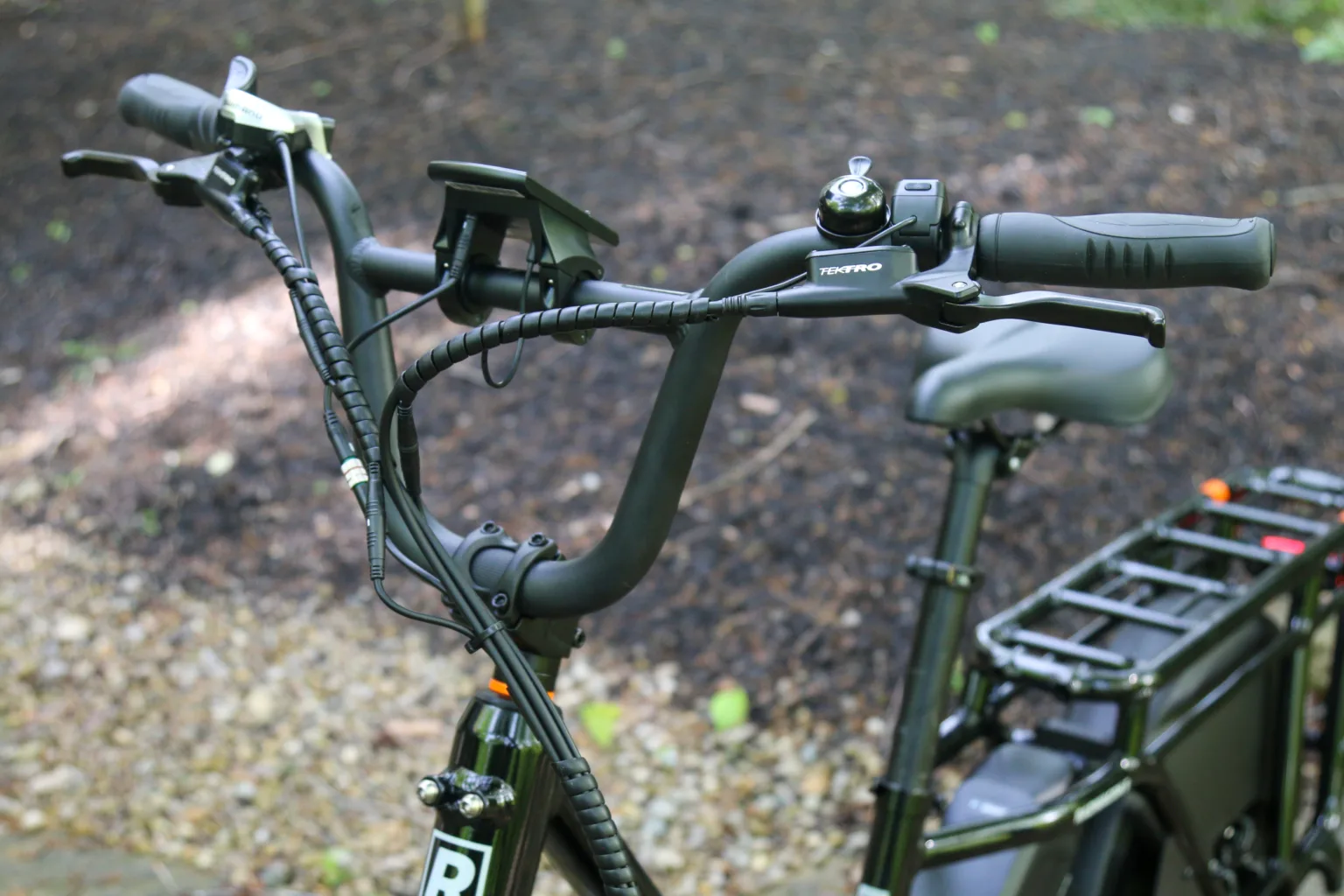

Another big change to the RadWagon design is the cockpit setup. Instead of an adjustable stem with a more standard bar, the Rad Wagon 5 uses a fixed stem and a high-rise BMX-style handlebar. This puts the rider in a much more upright position, which should be welcomed by most riders.
WARNING: SO MANY WARNING LABELS
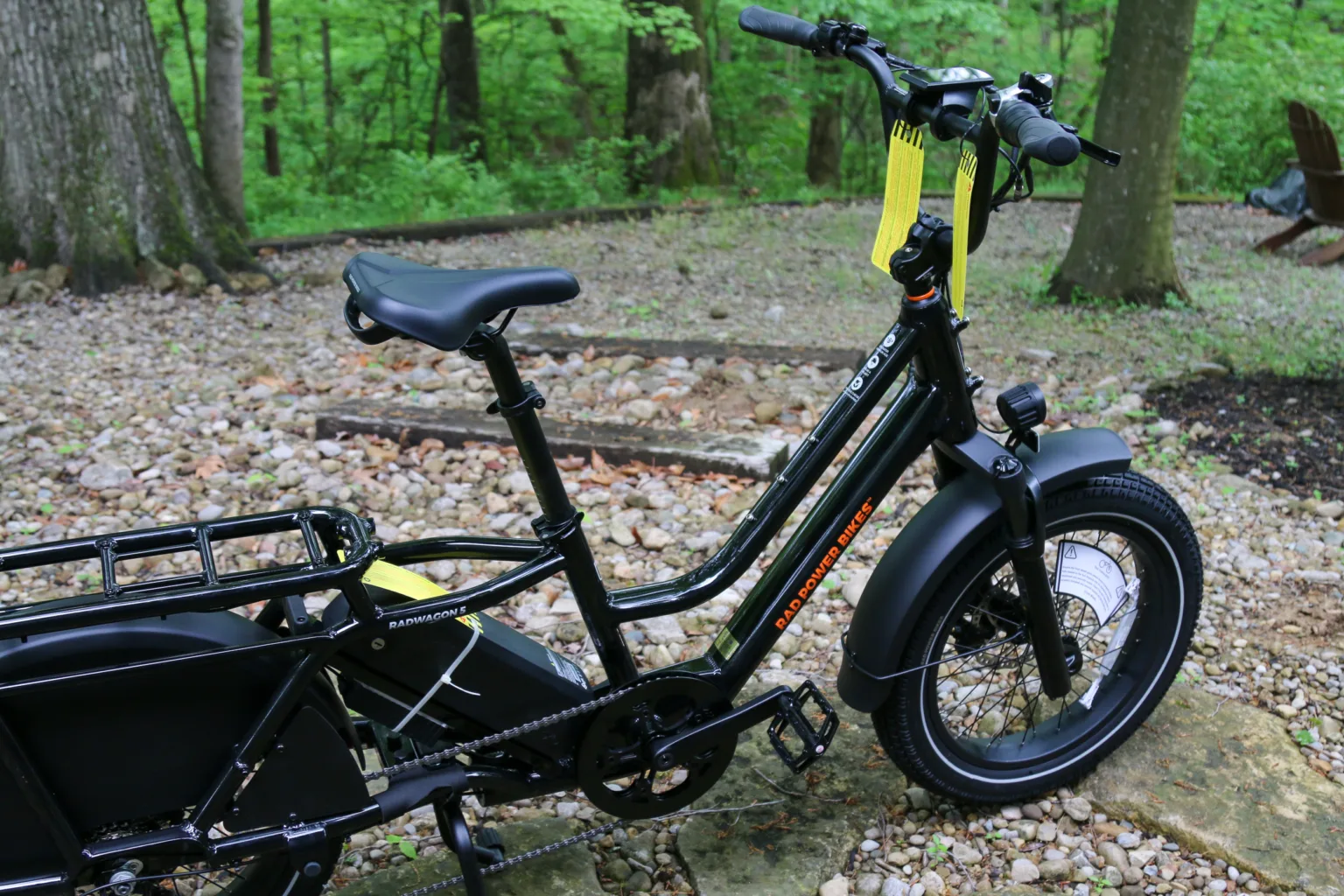
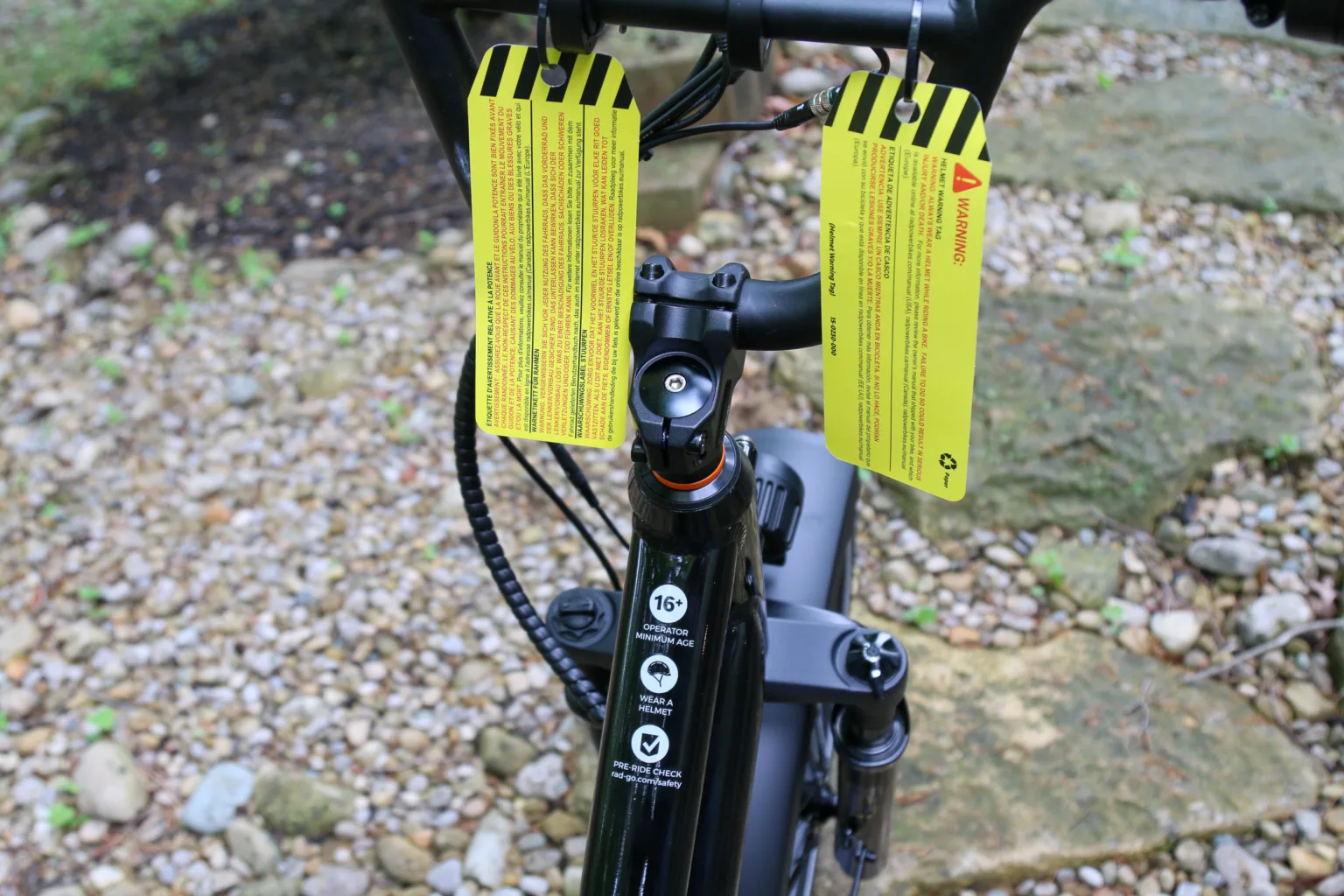
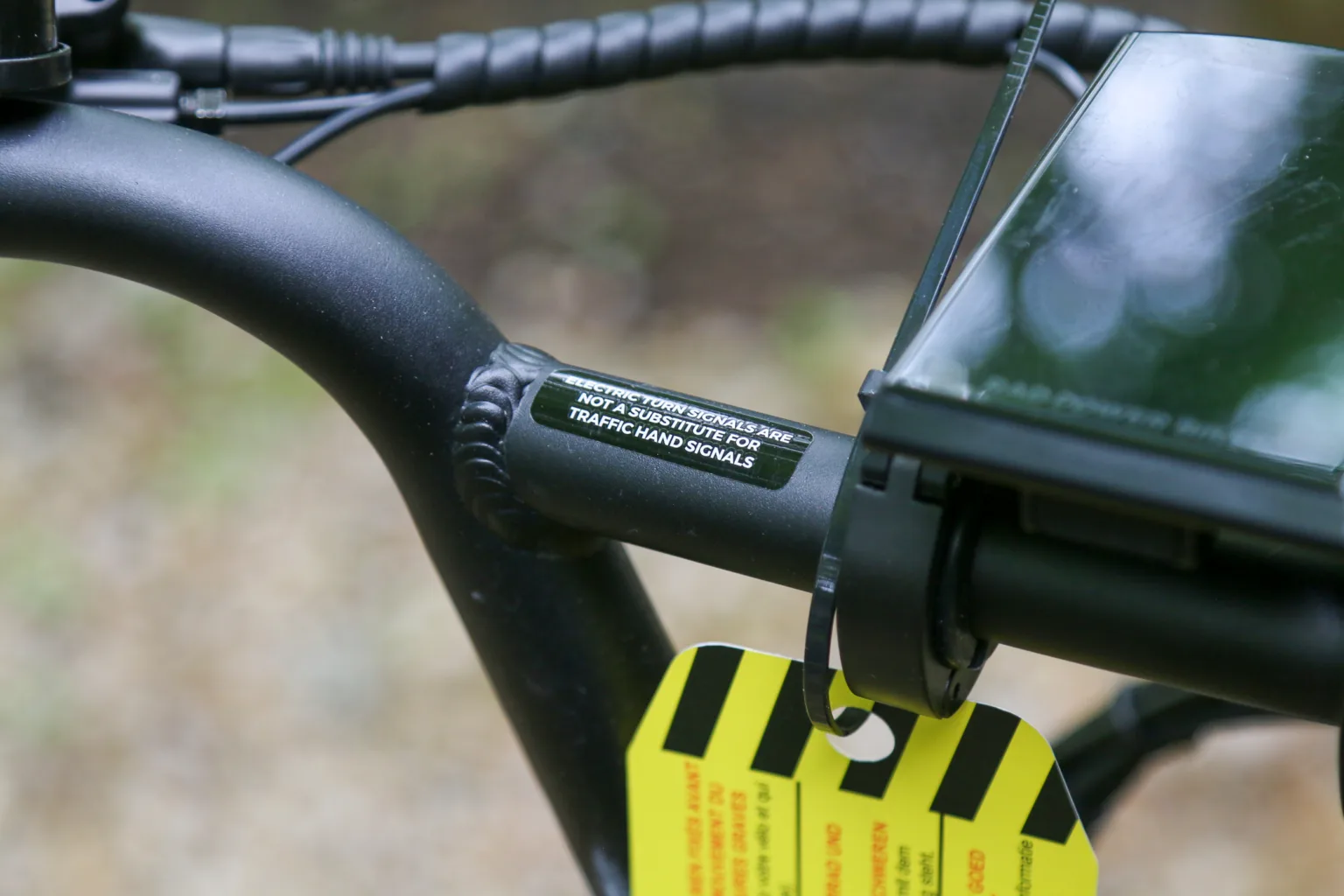
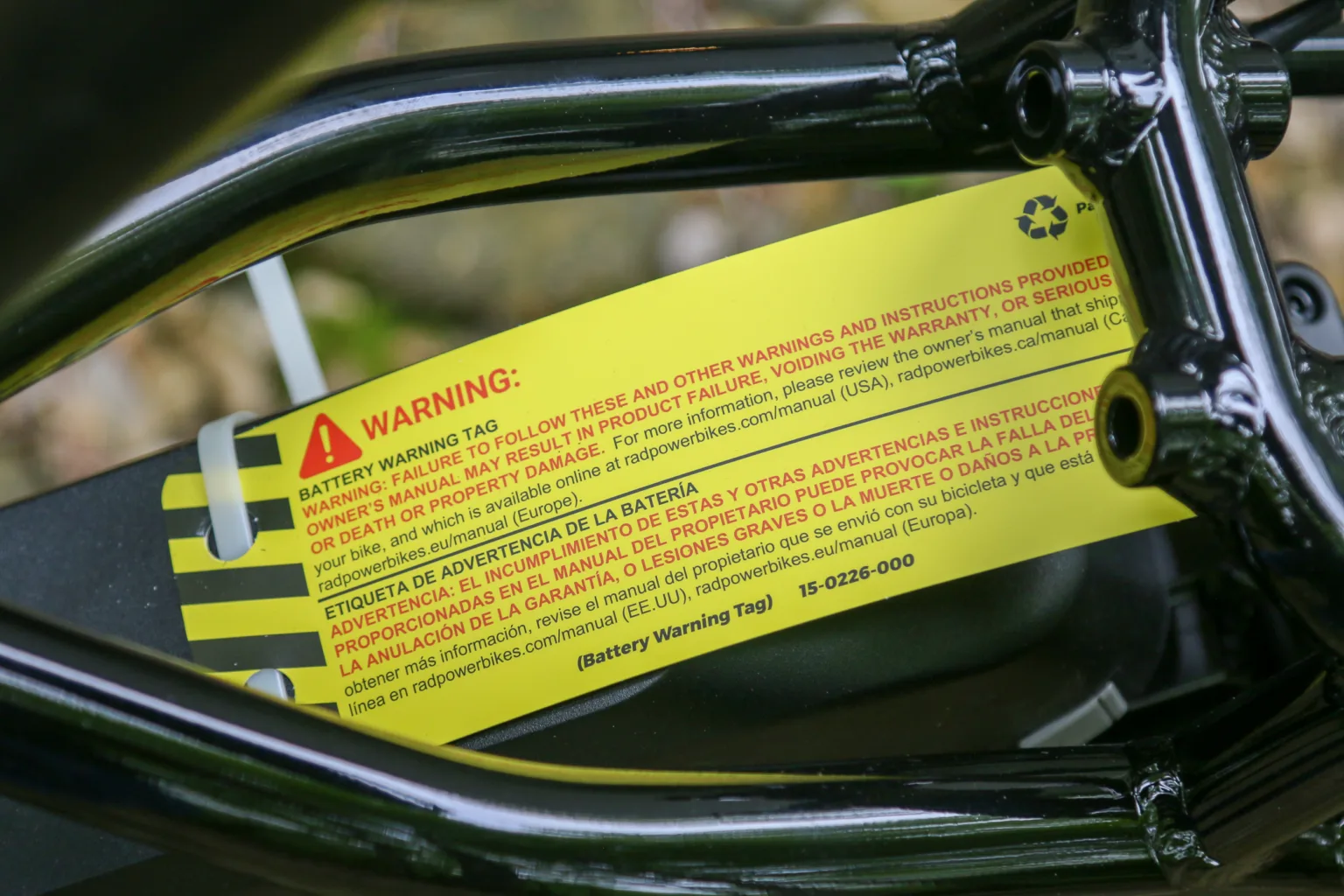
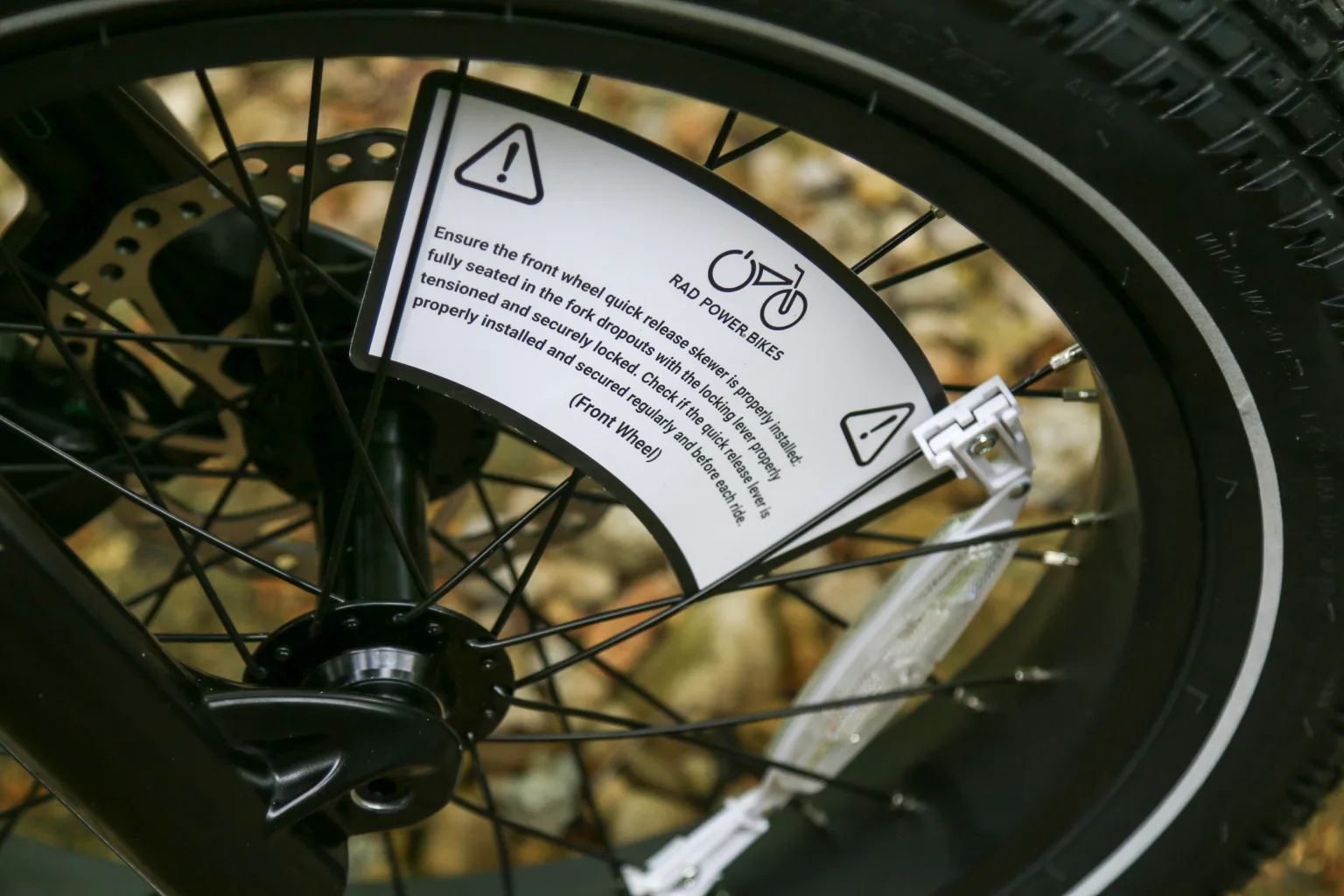
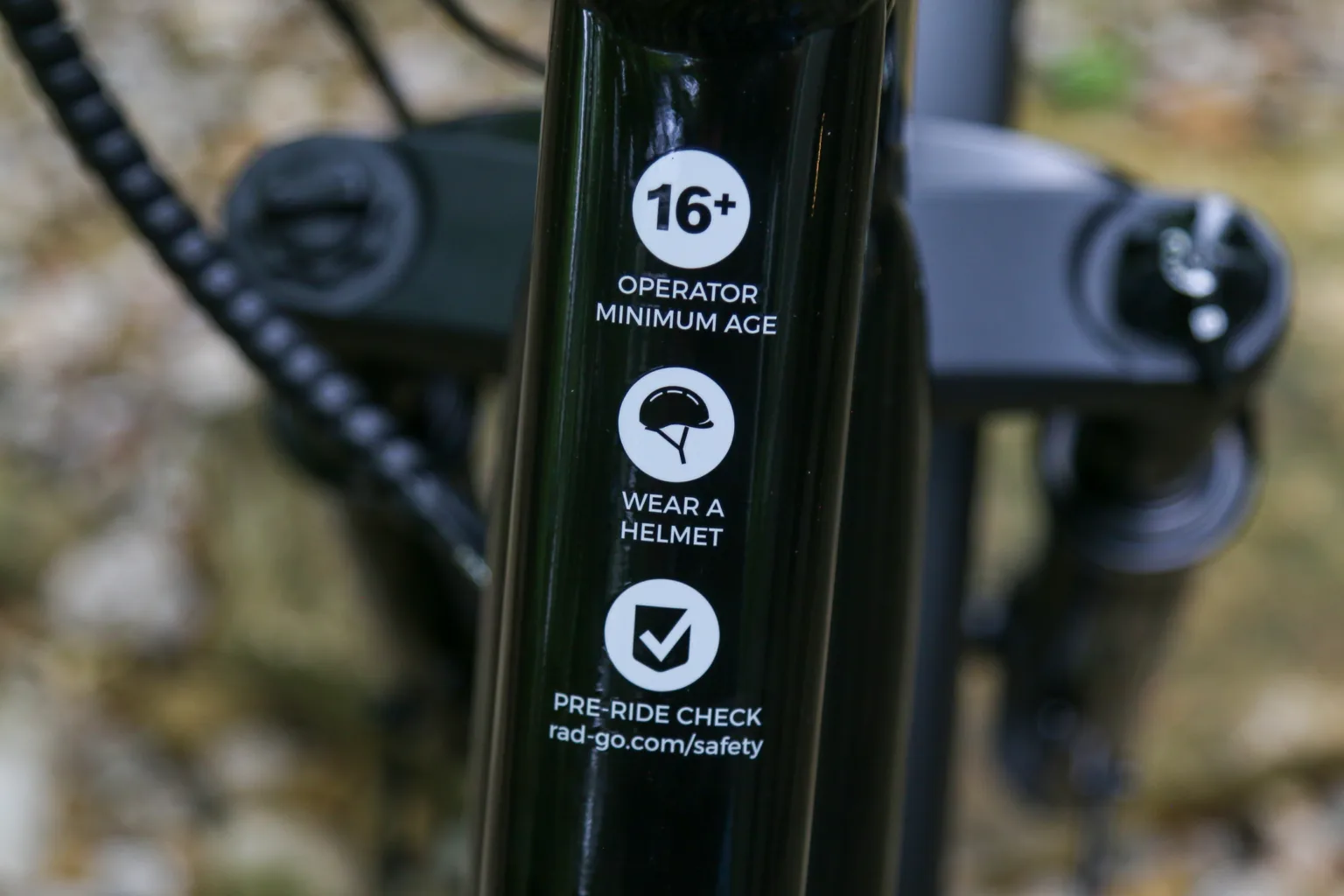
Remember those lawsuits mentioned earlier? It seems like they have had a profound impact on the amount of warning labels and stickers that are included on this bike. They are everywhere. There are even warning stickers that are under the clear coat directly in front of you on the top tube of the bike – no way to miss these (or remove them).
Electronics
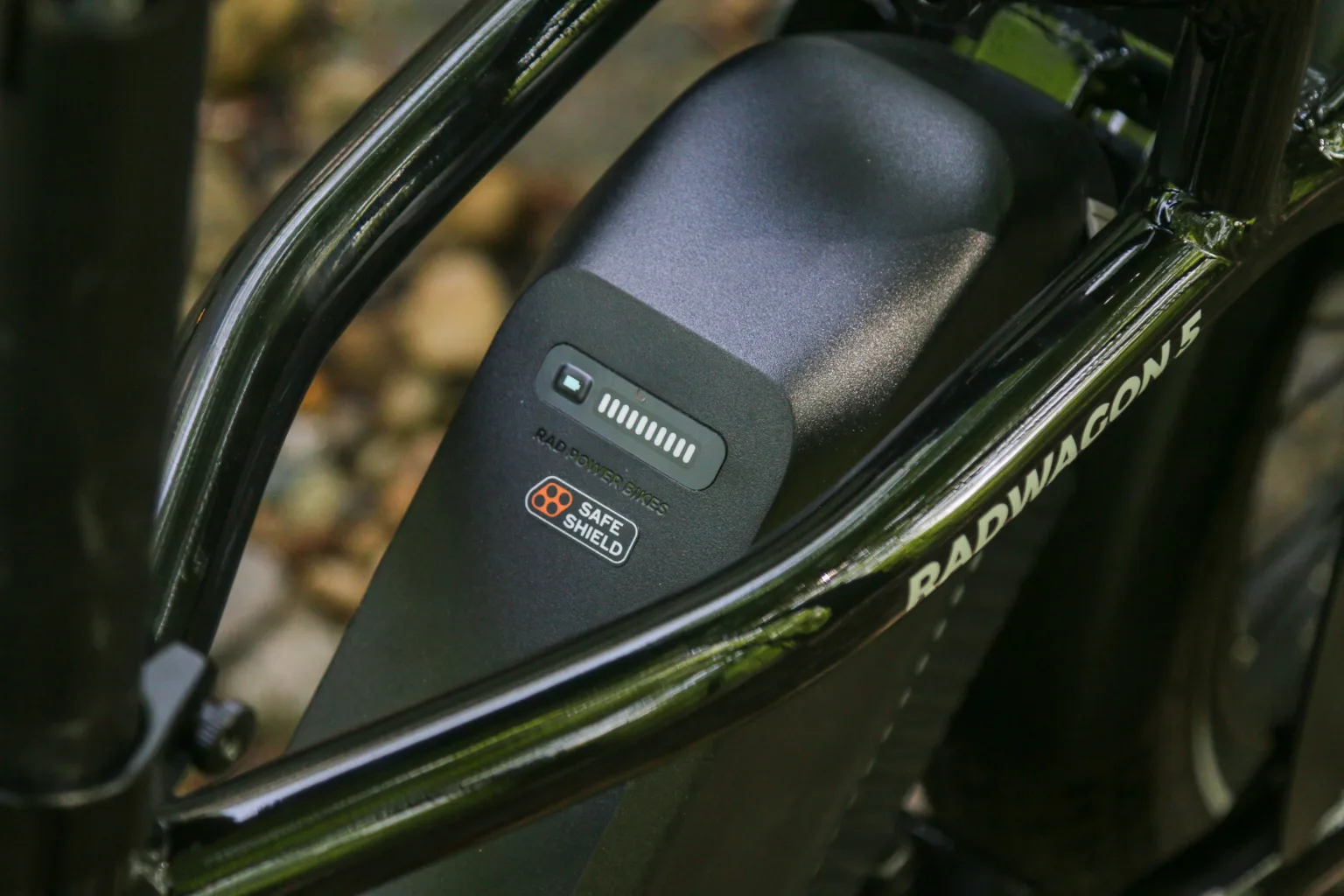
You don’t really expect an ebike under $2,500 to have advanced electronics, but the RadWagon 5 is impressive for the price. One of the biggest improvements would have to be the Safe Shield Battery tech which is UL certified to UL-2271. Essentially, it’s supposed to prevent thermal runaway in the case of a fire. That’s when a chain reaction within the battery raises the internal temperature and can eventually lead to the battery failing and catching fire. It’s this chain reaction that can make battery fires so hard to put out. The Safe Shield tech encapsulates each battery cell with a “heat absorbing resin” that claims to prevent this.
Fortunately, I have not needed to test this feature. But it does give me more confidence in the system as a whole.
The RadWagon 5 includes a 720Wh Safe Shield external battery that uses Samsung 50GB or LG M50LT cells. The power is directed through a 750W rear hub motor that offers an impressive 90Nm of torque. The included 48VDC, 2 Amp smart charger can operate on 100-240V AC power. A full charge claims to take somewhere between 3-7 hours, and I’ve never had it take more than six.
A full charge also claims to deliver 20-60 miles of range, which seems accurate. My ranges have skewed toward the 20-mile side as I’m almost always carrying a passenger and accessories, and tend to ride at higher levels of assist in Class 3 mode. To get the higher end of that range figure, you’d need to ride unloaded and at lower assistance levels.
Pick Your Class
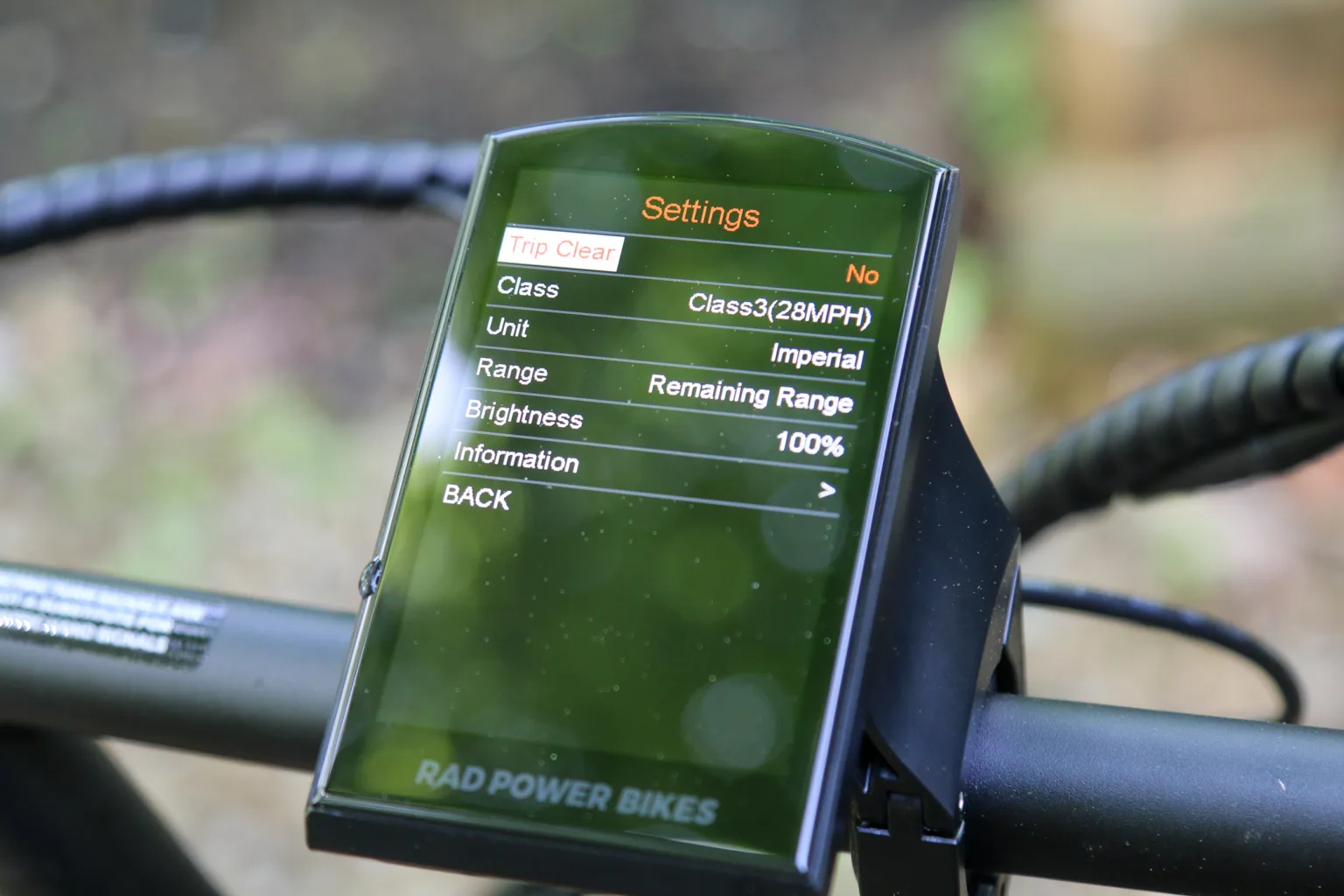
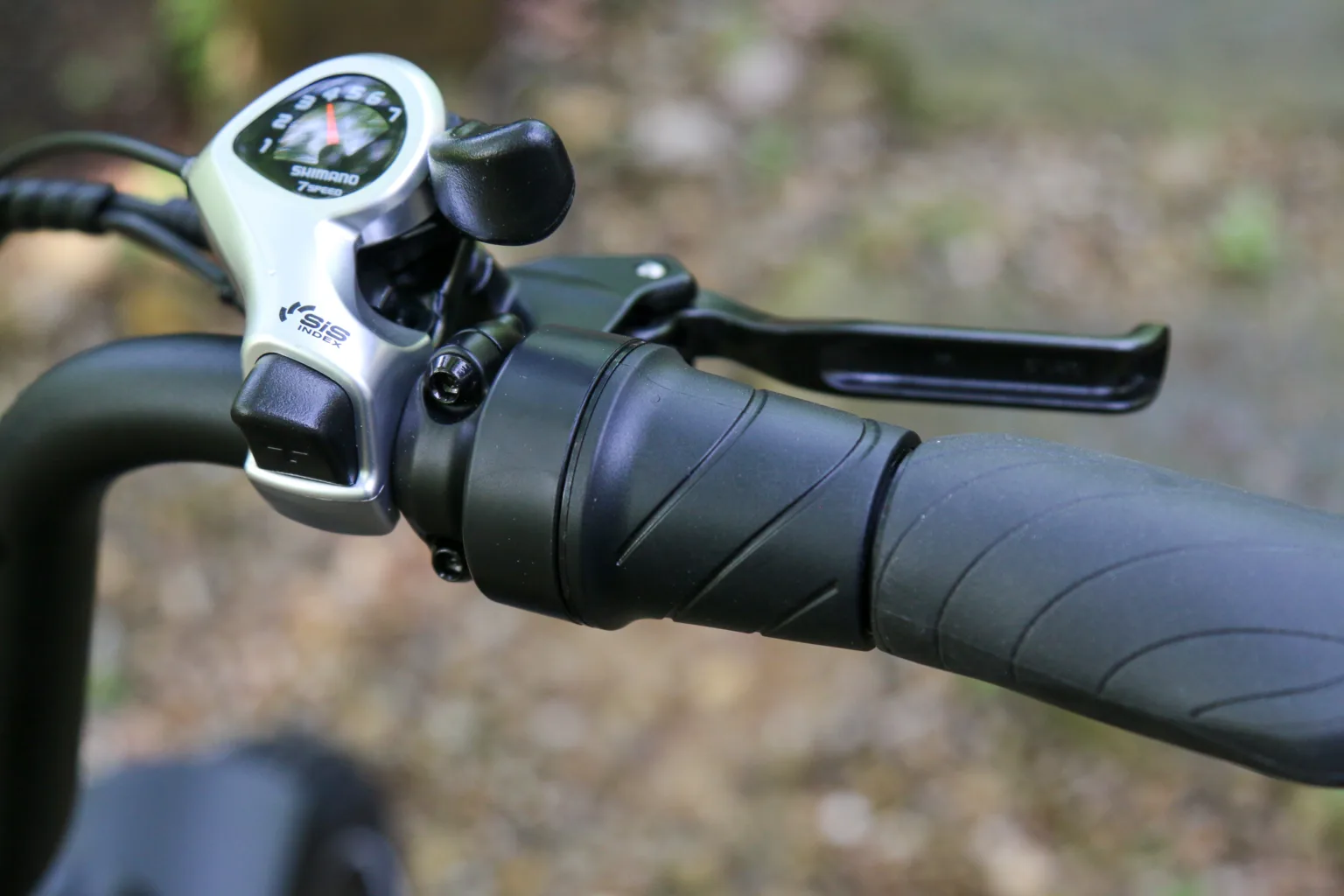
One of the more interesting electronic features is the new ability to switch between different ebike classes. While the bike ships as a Class 2 (20mph max speed w/ throttle), you can switch the bike to a Class 1 (20mph, no throttle) or a Class 3 (28mph, no throttle). Technically, there’s nothing preventing you from running the throttle if you switch it to a Class 3, but if you want it to be compliant with local laws, you can remove the throttle.
You’ll probably want to keep that throttle though – I use it all the time when maneuvering the bike out of the house, and up to the street. It essentially functions as an easier walk-assist mode, where you can juice the throttle a bit while walking the bike to help you get the heft up hills, curbs, etc. The throttle is also very helpful in certain situations where you’re trying to take off with a fully loaded cargo bike in a tricky area. You can use the throttle to get moving, and then switch to pedaling when you’re balanced on the open road.
Color Display, Torque Sensor, Charging Port and more
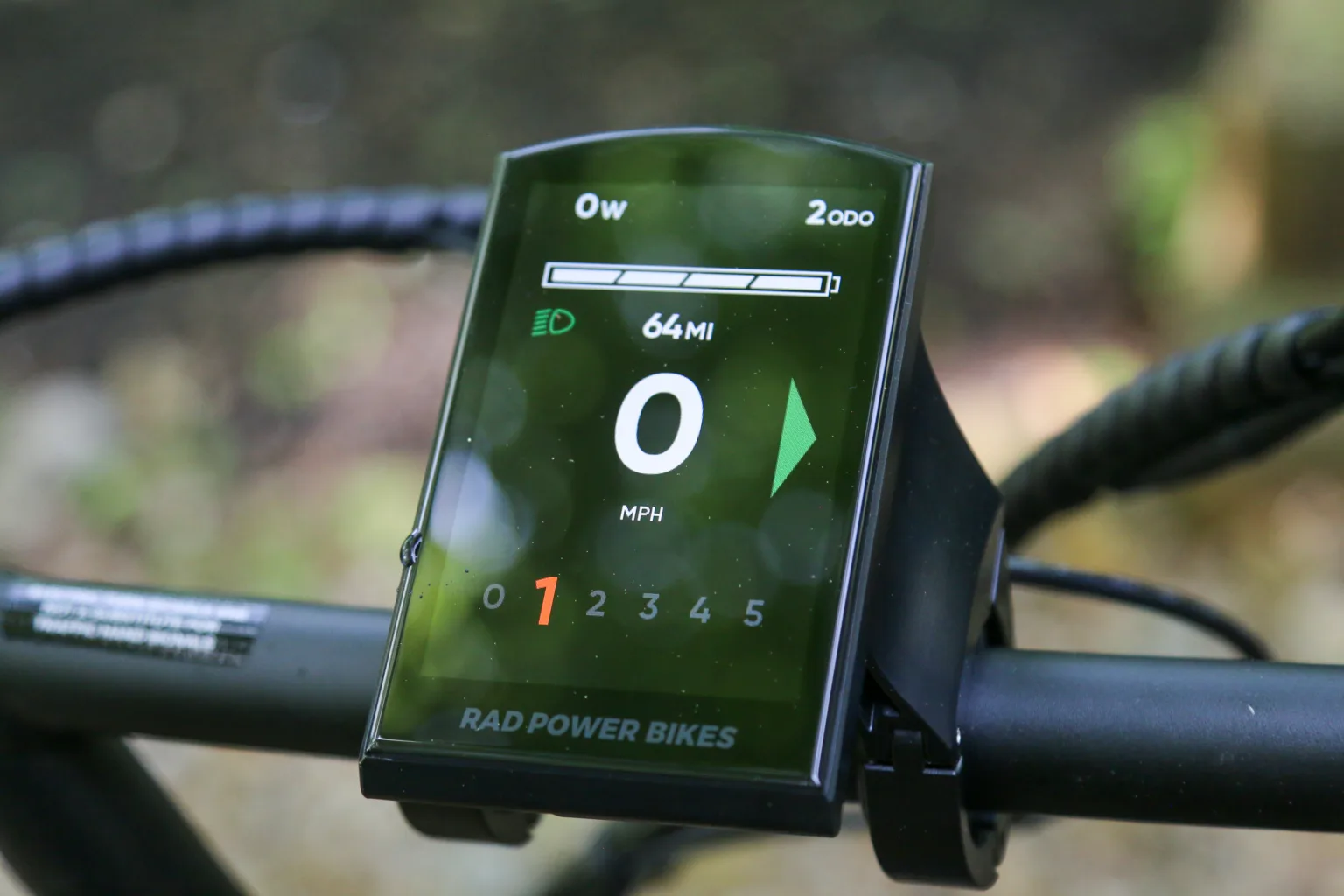
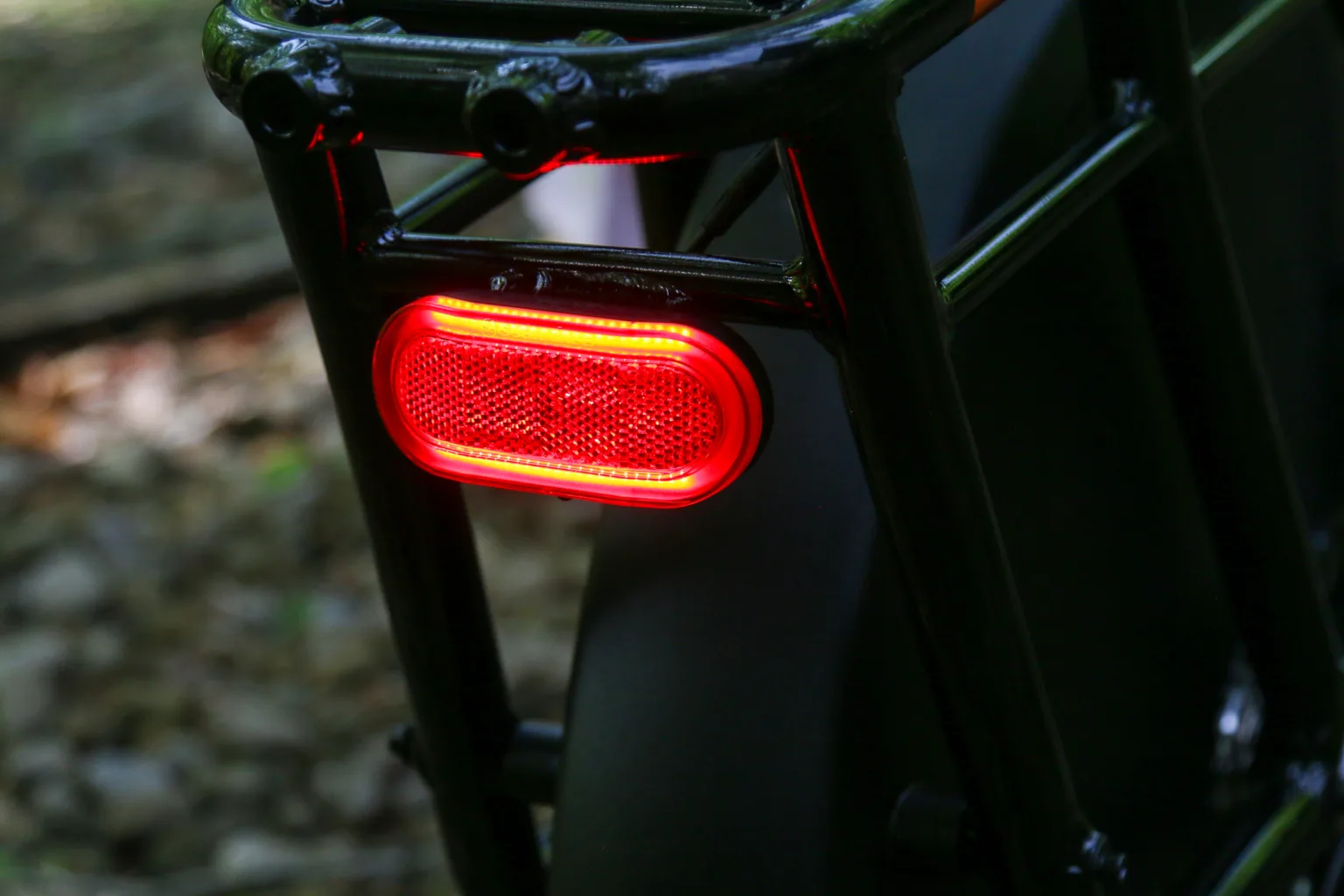
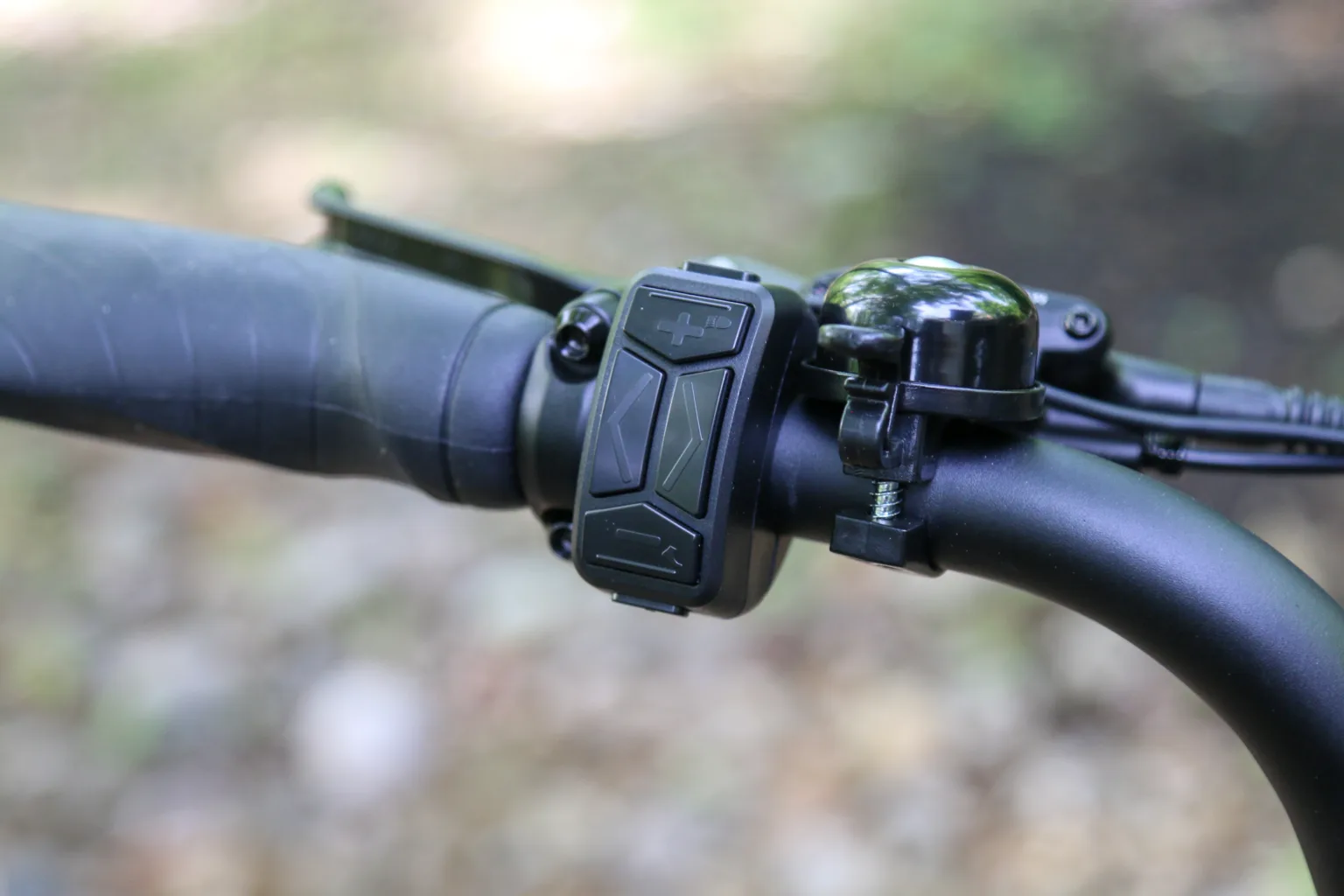
The class change can be accessed relatively easily through the custom color display, which is another nice touch for the electronics – there’s even a USB-C port on the display to charge additional electronics. A new torque sensor gives the RadWagon 5 much better assistance delivery than the 4 as well. Previously it was more of an on/off switch with a cadence sensor, where the new bike gradually delivers the power as you push, making the pedaling feel more natural.
There are five levels of pedal assistance, as well as a zero-assist option if you want to suffer by pedaling an 86lb cargo bike without the motor assisting you. All of these are easily toggled with the switch mounted to the left side of the bar, which is also where you’ll find the turn signal controls.
Yes, the RadWagon 5 has turn signals – but only on the rear, which seems like a miss. Because of that, there’s another warning label stating that they’re not replacements for proper hand signals. They’re also not auto-cancelling, so you need to remember to press the button a second time after you’ve made the turn.
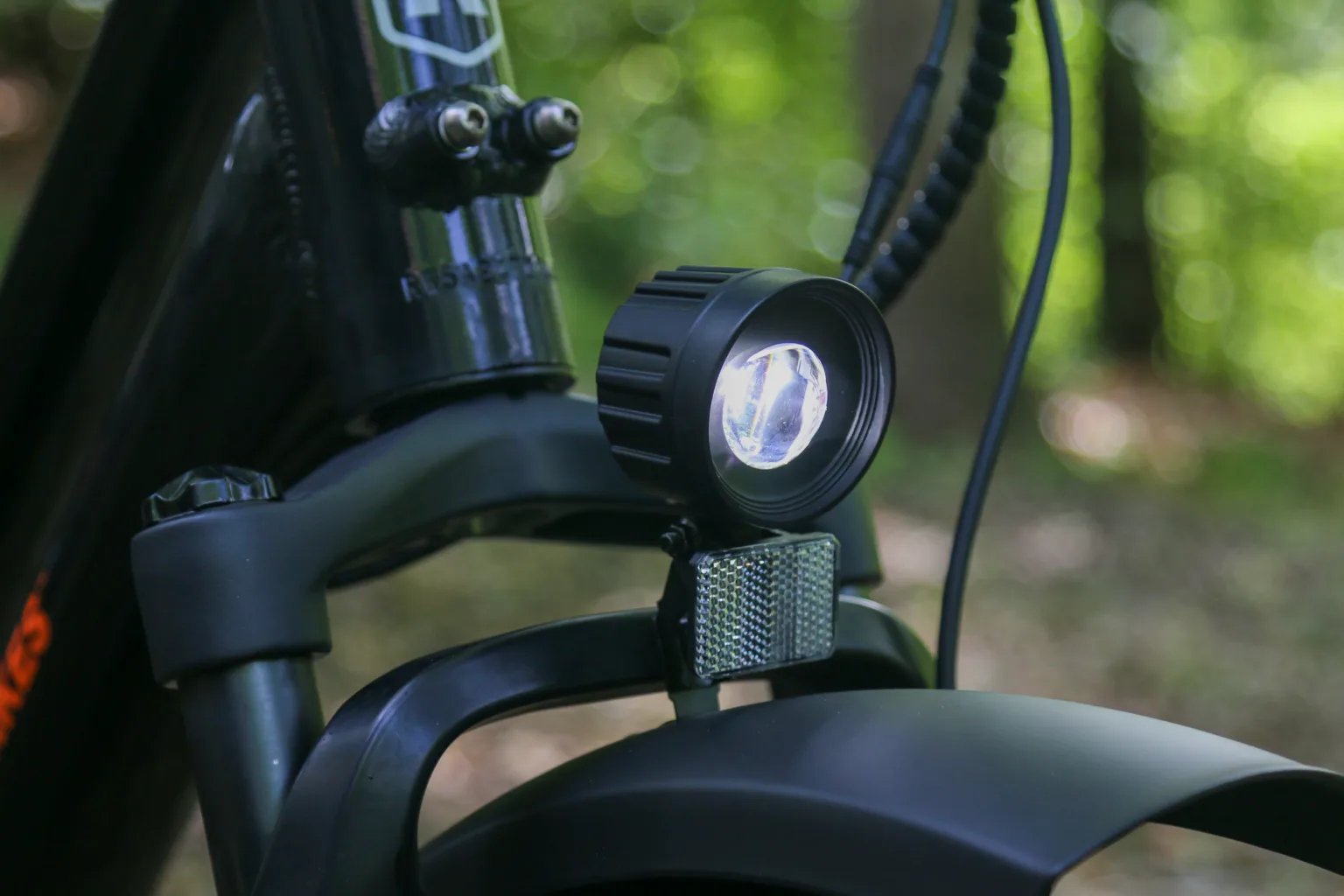
Fortunately, the front and rear lights come on automatically, with the front providing “~200 lumens.” Personally, if I was riding the RadWagon 5 at night, I’d want to add some brighter lights, but these are better than nothing.
Can you Build it Yourself?

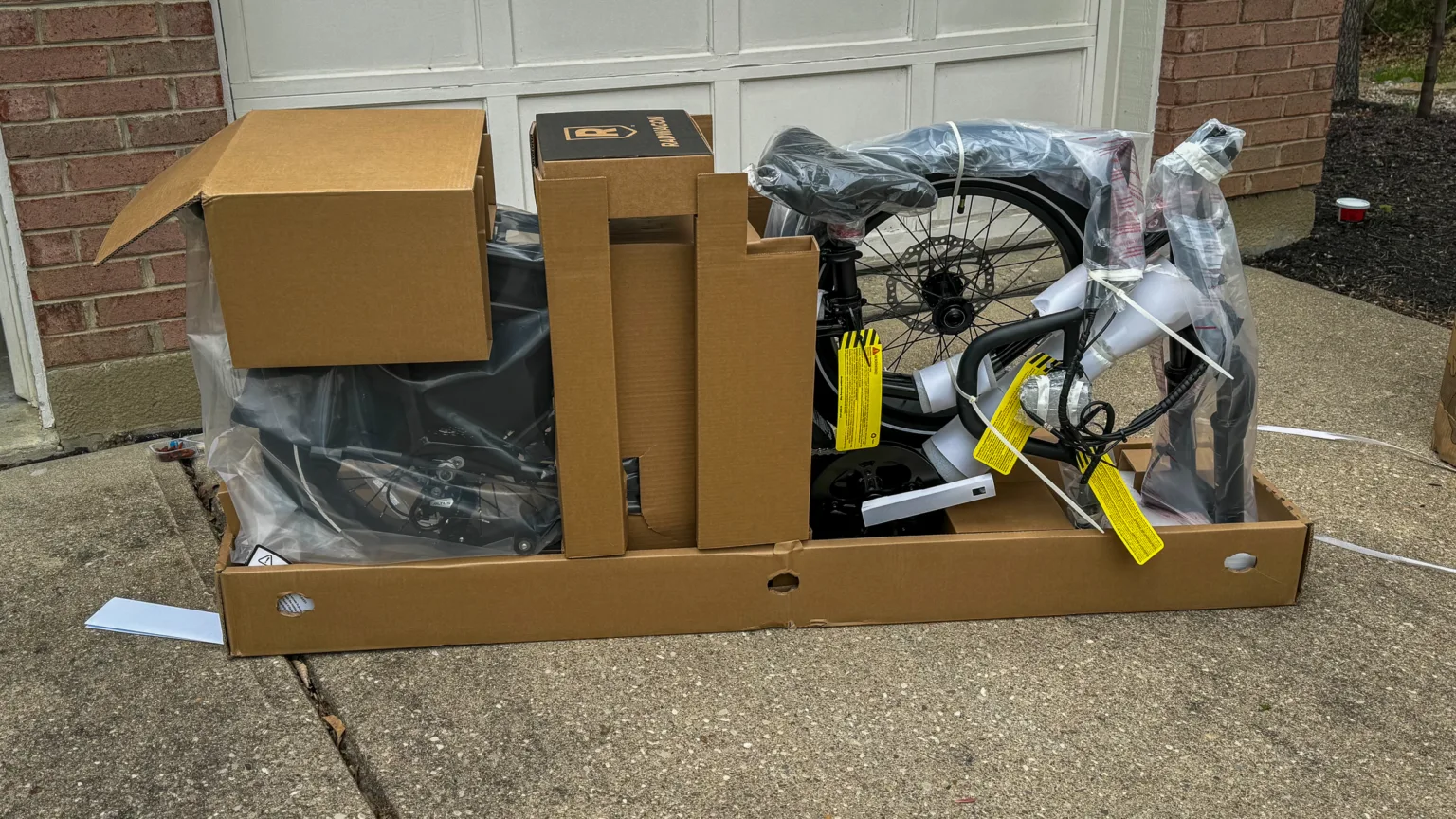
Yes, it is possible to build this bike yourself. Particularly if you have some experience wrenching on bikes. Rad Power includes a surprisingly comprehensive manual and a decent tool kit to complete the basic assembly.
But if you’re going to buy one of these bikes, or any bike online for that matter, and you don’t have much experience, take it to a shop and pay them to build it and properly tune it. You’ll want to make sure that particular shop will even work on consumer-direct ebikes before you drag it in, though.
Bumps in the Ride

Overall, the experience with the RadWagon 5 has been great, but there have been a few hiccups along the way. After less than 100 miles, I started hearing an odd noise as I was riding. After a few laps around a parking lot, I traced the noise to the rear spokes which had loosened quite a bit. After removing the wheel (pro tip: disconnect all the wires first), and then tensioning and truing it (you’ll need a larger 3.96mm spoke wrench for the oversized nipples), it’s been solid since.
I’ve been a bike mechanic for over 20 years now, and know my way around a noise. That’s important because it highlights an issue that faces any customer who buys a consumer-direct ebike, not just a Rad Power. If you’re not a seasoned bike mechanic, you will likely run into issues that the manual won’t address. While the build on the RadWagon 5 was better than the 4, and the bike came with a better-than-average user’s manual, these bikes still need a good amount of adjustment out of the box, and even more, once they break in.
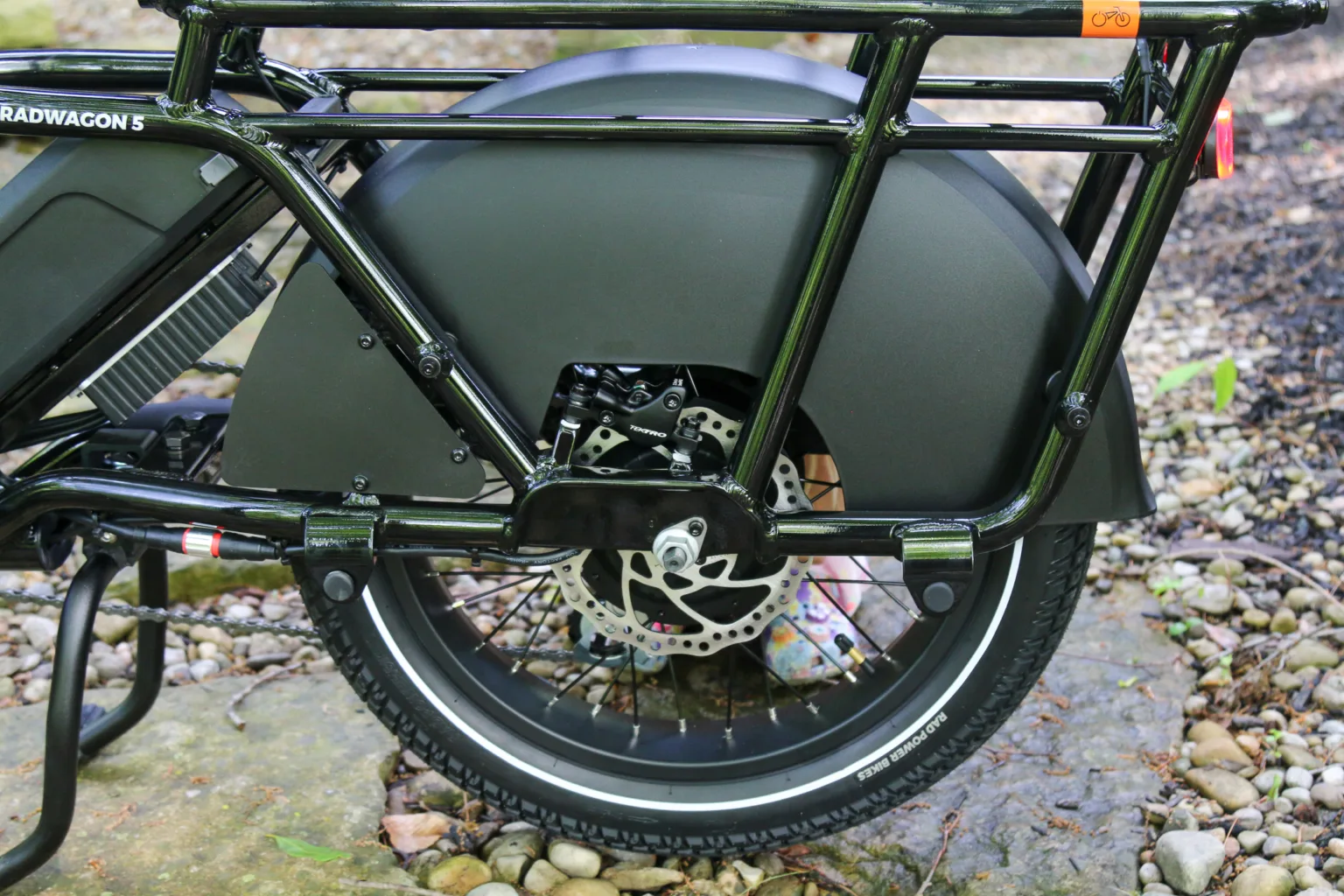
Then there’s the rear brake. Even after breaking in the brakes properly, the rear brake has developed a squeal whenever it’s used. It’s really more of a resonance through the frame than a squeal related to the pads. I’ve tried cleaning the rotor and pads, resetting pistons, readjusting the brake caliper, checking rotor bolts, etc. – just about everything short of replacing the brake pads or rotor completely. I’m sure if you ran into the same issue, Rad Power would do what’s necessary to quiet the brake. In spite of the noise, the Tektro hydraulic disc brakes offer plenty of stopping power and are very easy to control. The move to hydraulic brakes is a big plus over the mechanical brakes of the RadWagon 4, since the heavy bike chews through pads quickly and requires frequent pad adjustments for the mechanical discs. Hydraulic disc brakes self-adjust, so there’s no need for frequent pad adjustments – just keep an eye on the brake pad thickness.
The last issue comes in the form of an odd occasional clunk as the drivetrain seems to engage the hub motor. As far as I can tell, there’s no rhyme or reason for it, sometimes it happens, sometimes it doesn’t. It’s more of an annoyance than anything as it doesn’t really affect the ride, but you will feel it in the pedals. Again, this is something Rad Power would likely send out replacement parts for if I had pursued it as a consumer.
Other Things to Consider
If you’re thinking about adding a RadWagon to your fleet, there are a few things to consider. The biggest thing would be storage. At 86lbs without accessories, this bike is not light, and can’t be hung on most bike storage options. It also lacks the ability to be stored vertically on the rear rack like some other cargo bikes. As a result, you’ll need a storage space where you can easily wheel the bike in and out, and store it on the sturdy center stand.
The length, weight, frame design, and layout of the bike also will make it very difficult to transport on most, if not all bike racks. The bike has a 50.7″ wheelbase which leaves a few tray-style racks that will work, but you’ll probably need one with a ramp, and a rack that will work around the fenders and rack, and can accommodate an 86lb bike which will be tricky. In my experience, if you’re riding somewhere where friends or family are driving with their bikes, you’ll probably end up riding there to meet them.
Final Thoughts
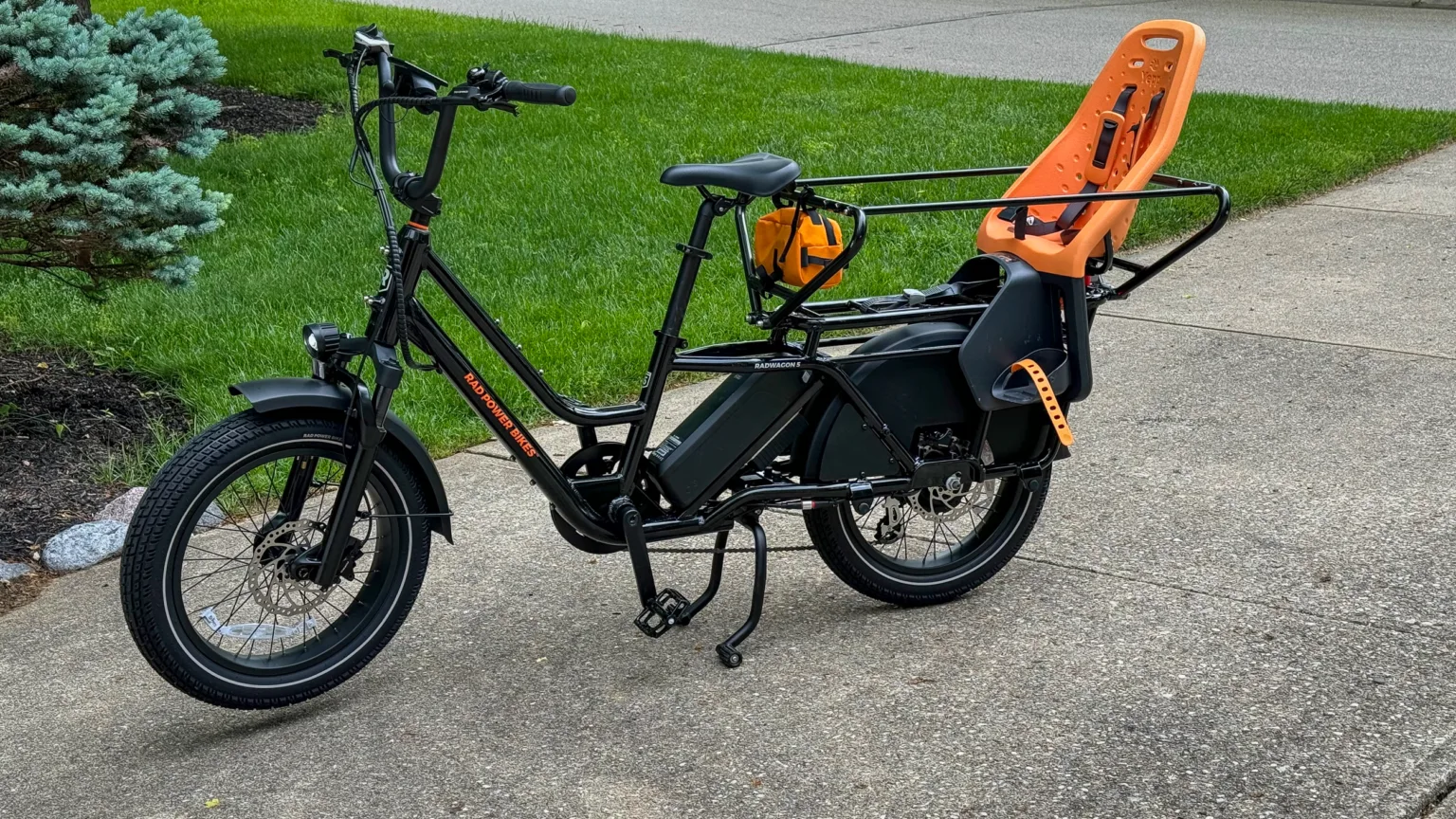
Overall though, I’m willing to overlook those issues given what the RadWagon 5 delivers for the price (if I had purchased the bike, I would follow up with Rad Power about fixing said issues, obviously). I could not recommend the RadWagon 4 based on my experience, but the RadWagon 5 is a different story. It’s not perfect, but the 5 is so much better than the 4, it’s really not a fair comparison. If you’re cargo bike-curious, the RadWagon 5 could be a good place to start.
